Text
Honest Review of the Pax 3 Handheld Portable Vaporizer by a Chronic Pain Patient
As a fairly recent convert to MMJ, it took me almost a year to lose my love affair with rolling a blunt and suffering the noxious smoke to medicate. Trying to subtly partake of much needed sweet leaf relief was a chore, dodging into the alley next to my home and trying to avoid the gaze of curious kids was proving stressful. It was more the image of their dad smoking than the substance itself, of giving them a bad mental image that allowed them to “smoke” was not good parenting. Plus I don’t want to feel like taking herbal medication is something to be ashamed of.
But a whole 12 months past before I got together the resources (saved!) to afford a decent pocket vape. My requirements were;
Discreet
Easy to use
Didn’t look too “druggy”
Did the job efficiently
Had accurate temperature control
I used to be a cigarette smoker, many moons ago but having never ‘vaped’ I was not sure what to expect. I knew the device had to heat the dry herb to hit the off button on my considerable knee pain and I knew that three light-ish puffs on a ‘joint’ got the job done, albeit with that smokey aftertaste, aroma and fear that a neighbour may smell the err, medication.
So I did some research and decided that a Pax 3 was the ticket, I almost purchased an entry level eBay special but figured that £80+ could be totally wasted (ha!) and I should go with a reputable brand. After reviewing our various recommendations I went and bought a Pax 3 from a local supplier.
Shopping For a Dry Herb Vaporizer
Evapo is a vape shop in Guildford mostly given over to liquid non-MMJ vape-ware, vaporisers, liquids and accessories but there was one cabinet market “CBD” which, given this is the UK, was a subtle clue as to what the cabinet held. The choice was limited to a Pax 2 or a Pax 3. Given that I am an inveterate tech-head I opted for the app controlled Pax 3.
The salesman was a cheerful upbeat sort who talked discreetly but knowledgeably of the features/benefits and what a dry herb vaporizer did. Plus, Evapo had a 15% off deal that weekend which reduced the ticket price from £219.99 to £186.99. Seemed a bit steep for a first time vape purchase, I mean, what if I didn’t like it? What if I didn’t get the relief I am seeking? Hey ho, figured in the name of research it was worth the spend. Five minutes later I exited the proud owner of one spanking brand new Pax 3, and instructions on how to pair it up with the app, more on that in a moment.
Unboxing the Pax 3 Herb Vape
When I got home I opened the box, which is as stylish as the Pax 3 itself, very Apple design led. You slide the box out a sleeve, and it opens with a satisfying resistance provided by hidden magnets. I can see why they get the price they charge.
It contains charger & USB charge cable, cleaning materials (pipe cleaners and pipe brush), a keyring that doubles up as a scraper, an oven like compartment with a holder for concentrates and waxes, a second half-charge oven lid, raised silicon mouthpiece and a stitched material sleeve and of course the device itself. The enclosed documentation is quite slim on any actual operating instructions, but does give you the limited instructions in many different languages. Plus a safety booklet, again, bereft of any instructions but telling you of the many dangers a device like this can inflict.
Once released from its plastic coffin the device is pleasingly heavy in the hand. The heft gives it a solidity, again the comparison to Apple cannot be overstated. It’s solidly built up to a standard not down to a price.
I choose a matt black finish and thus with one click on the top of the mouthpiece, the LEDs stood out like runway landing lights. I set up the device to charge, it already had 3 of the 4 lights lit, and within 20 minutes the remaining light blinked on and we were good to go.
youtube
Pairing the Pax 3 With The App
By the time the charge had finished I was ready to pair the Android version of the app with the device and had gotten to the point where you shake it to pair it. Try as I might my Google Pixel 2 XL running Android Pie (9.0) was just not having any of it, tried different settings on the phone and despite the phone stating it was paired, the app itself refused to play ball. I am guessing this is a Android Pie bug, maybe? I had only installed Pie on the phone a few days earlier so I am guessing app bugs are a distinct possibility. Many of the reviews however also noted pairing difficulties, so perhaps not? Later I downloaded the iPhone iOS app onto my iPad and that not only paired without trouble it also controlled the device well.
First Use and Impressions
Anyway, to the first trial, my ‘herb’ was ground and packed into the oven chamber, it took a relatively little amount, I would say half a single skin joint. I thought this seemed like a very minor amount given that the device allowed for several hits on one fill, but I went along with it. Within a couple of minutes I was ready to go, with a fully charged Pax 3 that was now also fully charged with bud I hesitantly hit the ‘on’ button. The device heats quickly 20 – 30 seconds and the flashing purple LEDs turned green notifying me that the Pax 3 was ready to dose me.
I’d opted for the highest heat setting, I just felt that if I was going to try it then I should really give the Pax 3 a run for its money. I took a tentative first pull. The taste was not what I expected, a floral, greenery taste with a slightly timber smoke edge to it, not burning but that kind of smell you get in a wood on a hot day. I guess that’s the oils and the waxes boiling off their terpenes which give the bud its flavour profile. As the flavour died back and I exhaled it suddenly gave me a taste of coffee grinds, not full on coffee in your mouth but that half smell of roasting you get as you walk past a coffee house.
Very pleasant, very smooth and much nicer than a pull on a ‘Fatty-Boom-Batty’. The specific stock I was smoking is not overpoweringly strong, but does do the job for my pain. As an example I can take a single pull on a one-skinner and have it hit the off button on my knee pain for a couple of hours but leave me focused enough to answer calls, write code and function without the distraction of grinding bone on bone action. I took a second tentative pull, and then thought, screw it, and took two much longer, deeper pulls.
The Pax 3 vs Knee Pain
It was Saturday night and I was feeling like kicking back a bit so wasn’t concerned if I overshot the runway when it came to switching off the red flashing pain klaxon. As per usual the hits took time to kick in, with my usual method of ingestion it takes around 10 minutes for the meds to make their way into my brain and do what it does. Oh-so much better than the mechanised approach that codeine seems to take. Wrapping everything in cling film and preventing you from feeling pretty much anything but the ‘ready break’ glow (US readers Google it, you’ll see how accurate that actually is) that Codeine gives you.
I usually then go make a cuppa, and settle into the sofa with my better half and wait for the pain to roll back and relief to roll in. Well, the Pax 3 definitely delivers, I was starting to feel the effects inside the ten minutes, and all was good. Everything suddenly felt very good with the world, in a way that pain seems to rob you of. Pain adds jagged pixelations to your every move, thought and sensation. It’s like you’re dealing with low resolution images and trying to pass them as 4K cinemascope.
Codeine always took away the ‘jaggies’ but delivered a vaseline smeared lens perspective of the world. All soft focused and fuzzy edged, you felt like the world was a bouncy castle made of marshmallow. However the Pax 3, not only delivered the usual relief but somehow it felt less punchy, like the difference between a $20 bottle of bourbon vs $120 bottle of premium single malt scotch. You can see why the Pax 3 gets the reviews it does.
Controlling Dose with My Second Use
Lets just say 30 minutes later as I am lying on the sofa, totally baked, I tried to have a chat with my other half and ended up giggling away as she laughed at me, not with me. I remained quite lucid, but was just very relaxed by the whole body sedation which is not how my current supply usually hits. The effect lasted at least 4 hours, in fact I went to bed and slept soundly, I usually wake early, 6:30 or 7am, woken by the knee pain, but I overshot that by at least 2 hours. Woke feeling fresh although a little fuzzy but coffee and breakfast sorted that for me.
Therefore I wanted to avoid this with my second use, which was much more controlled, after a little bit of reading online. Just 2 short pulls and the device turned down to a less intense heat at 3 LED lights. I think this might be the sweet spot as the effects again took 5-10 mins to become very noticeable but there was much less of a body sedation, in fact I felt a clarity in my thinking and it just neutralised my pain.
Gone.
Not a trace.
Before medicating I would put the pain at a 3 on our pain chart, far from unbearable but definitely ’nagging’ and niggling at me. So the two hits were a good amount to kill the pain but not dull my entire brain. In fact I would now consider a single pull at 3 lights during a working day. Maybe.
Final Impressions and Overall View
I would give the Pax 3, 5 stars, but I have no other benchmark other than self-rolled all-weed blunts, joints and the occasional bong rip. I feel like I did when I upgraded to my first smart phone. Suddenly I had a computer in my hand and felt like I was ahead of the curve. The Pax 3 is very similar, having previously burnt a tube of rolled up dry herb I now have control and can set the temperature to the exact setting I want and get much more measured doses from my choice of pain meds. The only remaining variable of course is the plant material itself.
I suddenly see that devices like the Pax 3 are invaluable in allowing pain patients to get closer to a proper dosing regimen and if they feel like having a little more fun on a Saturday night, then at least it is a choice. That, for me, is what Cannabis should be about, the choice, the choice of your medication, the choice to choose your own safe pain meds. That it is your body and therefore making a choice of herbal remedy vs the output of an industrialised process, is your right.
I wish I had tried a vaporiser earlier, the Pax 3 is a very good product that does the job without fanfare, but does it stylishly and without announcing to the world you partake. The only small downside was that after I had fiddled about with it, trying to get it to sync with my Android phone, and then using it to heat my herb it got a little warm. Not uncomfortably, or dangerously, but it did warm noticeably, which given its function is not unreasonable, but it got a touch warmer than I thought it would. Put that down to user expectations perhaps, but one to consider. I am exploring a silicon sleeve for it, just to make it the perfect portable medical device.
youtube
The Pax 3 is a total winner and I am very pleased with the value for money and recommend it to you if you are considering using a vape. If you have pain, don’t leave home without it.
Click Here to Order The Pax 3
The post Honest Review of the Pax 3 Handheld Portable Vaporizer by a Chronic Pain Patient appeared first on Cannabis for Chronic Pain.
source https://canna-base.com/pax-3-handheld-portable-vaporizer-review/
16 notes
·
View notes
Text
The Cannabis Groups Facebook Doesn’t Want You to See
As of the 6th August 2018 Facebook started to filter and remove specific groups from their search results. Search on Facebook has always been a bit of a hit/miss affair, but now they have removed the ability for users to search for ANY Cannabis Groups, or Marijuana Groups and related searches. You also find no Cannabis Pages or Marijuana Pages either when you try and search for any content to do with Cannabis or Marijuana, apart from videos. None. Nadda. Nix. As of the 8th August 2018 this was what you see when you search for Cannabis in the Facebook Search.
Go on try it! You can’t find anything apart from videos relating to the search terms for Cannabis, Marijuana and all associated search terms. Whilst this is Facebook’s right to reduce/remove functionality, we believe the only reason to do this is to try and stop or reduce the effective use of Facebook as a way for Cannabis users to share information.
“Censorship” is perhaps too harsh a word, as Facebook is a private company and has the right to allow or disallow specific content based on nothing more than their own internal policies. However we believe that if there is information “out there” then it should be freely available. What next? An outright removal of ALL Facebook groups and Facebook pages with any mention of Cannabis or Marijuana? Of course they can do this if they feel it is in their own interests, but that will affect a LARGE number of people who may choose to look elsewhere to connect with other like minded people. Taken to the extreme, this could see anyone who is a member of a group or who may have liked a page for Cannabis or Marijuana being banned or having their accounts suspended. Who knows, but it is their platform and they can do what they like…
With all that in mind, we have put together a list of over 400 groups that might be useful for users of Facebook who wish to share their thoughts and connect with other cannabis users, medical or recreational. If you have ANY groups that are not mentioned or are running a group that you would like to see added then please do. We are working to improve the list and make it as usable as possible for our site visitors.
Get The List as a PDF Here
Your email:
Medical Cannabis Facebook Groups
Cannabis Heals
VA Veterans For Medical Marijuana & Cannabis Products
Clinical Cannabis Care
Cannabis – Gift Of Gaia
Medical Marijuana Patients And Caregivers In Jackson
Cannabinoid Crusaders
Medical Cannabis Oil
Stoners With Pain
Ronnie Smith Cannabis Oil Success
CBD&Thc Medicine Info For Cancer
Michigan Medical Marijuana Patients
Medical Cannabis Growers
Cannabis Oil Solvent Think Tank
Cannabis Oil… “The Cure”
Texans For Medical Marijuana
Michigan Medical Marijuana Patients
Maintaining My Recovery With Cannabis: Support Group
Medical Cannabis Oil Making Uk
Cannabinoids
Med Marijuana, Cannabis Sativa Seed Oil And Medi-Paws, Natures Alternative
Medical Cannabis Canada Association
Cannabis Oil Advice With Friends
Ecs Support
Michigan Medical Marijuana Grower
Making Cannabis Oil With Friends
Grandpa Bill’s Magic Garden
Medical Marijuana 4 Florida
Relief Of Pain Using Cannabis And Other Herbal Remedies.
Medical Marijuana For Cancer And Any Other Disease Process
Cannabis Oil Advice & Information For People & Pets
Cannabis For Rsd And Chronic Pain
Massachusetts Medical Marijuana Patients, Growers, And Caregivers
Cannabis-Budwig Made Simple
Success With Cannabis (Medical Marijuana)
Cannabis/Hemp Co2 Extracts
Phoenix Tears Cannabis Oil Advice
Cannabis Oil Success Stories
Cannabis Raw, Uncut & Unfiltered
Medical Marijuana Program Connection
Medical Marijuana Growers Of Ma
Cannabis/Medical Marijuana
Medical Cannabis
I Deserve Canna
Australian Cannabis Products
Medical Marijuana – Cannabis Extract Research
Cannabis Oil Advice Down Under
Medical Cannabis South Africa
Global Cannabis Education
Illinois Medical Cannabis Community
New Mexico Compassionate Cannabis Patients Advocates
Medical Marijuana For Chronic Pain
Healing With Cannabis
Cannabis Oil Success Stories
Cannabinoids Are Essential
Miracles Of Cannabis
United Patients Alliance
The Medical Pot Guide
Cannabis Oil & Natural Cures.. Dundee, Scotland.
CBD Facebook Groups
CBD Oil (From Hemp) Information & Support
CBD Oil Users Official Group
CBD Oil Info For The Inquiring Minds
CBD Consumer Group Uk/Eu
CBDclub
Cannabidiol CBD/Hemp Faq
CBD Hemp Oil Benefits & Support
CBD And Fibromyalgia
CBD For Your Health
CBD Oil Awareness Group
CBD (Cannabidiol) Oil & Hemp Information And Resources
All About CBD Health
CBD Oil Users Support
CBD Info & Healthy Living
CBD Community Of California
CBD Society
CBD Oil The Information You Need
CBD Users Uk – United!
CBD Users Uk
CBD Oil Users Group
Cannabis Oil Success Stories CBD
CBD Oil Users & Education Group
Love Light Wellness Collective CBD
Growing Cannabis Facebook Groups
Autoflower Growers Worldwide
Club Cannabis – “ScrOG” Style Growing.
Home Grower Consulting
Organic Cannabis Growers Helping Growers
Cannabis Growers Worldwide
Marijuana Growers Helping Growers
Cannabis Growers Helping Growers
Weedbook Growers Helping Other Weedbook Growers Worldwide
Growing Cannabis With Led Lighting
420 People Growing
Cannabis Master Growers Group
Cannabis Grow Tips And Advise
Nectar For The Gods Growers
Colorado Advanced Growers Guide
Cannabis Growers Collective Worldwide
Humble!!! Marijuana Growers Group
THC: The Helpful Cannabis Cultivators
Growers Br
Oregon Marijuana Growers
Washington Dc Cannabis Growers
Marijuana Growers
MA Grow Corner
Oregon New Cannabis Grower’s Q&A
Basic To Advanced Cannabis Growers
Cannabis Autoflower Growers
Marijuana Growers Helping Growers
Cannabis Growers Group
Help And Tips On Growing Cannabis Indoors(Over 21 Only)
Led Growers And Builders Forum
Cannabis Growers Elite – Beginners
Advanced Cannabis Growers
Colorado Marijuana Growers Networking Group
Cannabis Culture Club
Cannabis Growers United
Medical Cannabis Outdoor/Guerilla Growing
Cannabis Growing Tips N’ Tricks
Growing Weed University
Adopt A Grower (Cannabis) Seasoned Growers Dedicating Their Time.
Grow Room Sa
Cannabis Growers Of All Types In The Us
The South African Cannabis Growers Club
Dagga Cup
Cannabis Growers Helping Cannabis Growers
Growing Cannabis Outdoors
Acmpr Grow Your Own
Cannabis Grow 101
Northwest Cannabis Cultivators
Cannabis Growers Lounge
California Marijuana Growers
Cannabis Growers Resource Group
Recreational/General Cannabis Facebook Groups
Stoner Nation (Original)
Cannabis World
Marijuana Club
Smoke Clubs
Plants Of The Gods
Canadians For Cannabis
For The Love Of Cannabis!
Kush Kommunity
N.H.S 420 Breeding Project
Smoke Buddies Legalize Rj (Official)
Autoflower Network
Cannabis
Cannabis Growers Community Forum
Bud Smokers Only
The THC Tabernacle
Cannaworld
Herb Connoisser’s
Marihuana 4:20
Bean Collectors And Traders
Cannabis Vip Club
Cannabis Vip Club
High Times Ftw
Hemp For Life!
Cannabis
Cannabis Knowledge
#Squashthestigma
Marijuana Supporters
One Love. Reggae, Roots, Peace, Herb & Love.
Marijuana Manifest
Project Mayhem 4.20
Cannabis Club
First Class Stoners

Maine Cannabis Closet
Cannabis Fishing Club
Weed It’s A Herb, It’s A Flower !!!
Top Shelf Cannabis Club/Social House
Stonerhomie Group
The Berkshire Marijuana Initiative
Dankcapitol
Blunt Graffix
420 Tokers Club
Blood Type: THC
Australian Cannabis Association
Pot Pix
Cannabis Country
Stoners Worldwide
Proud Stonerz
Smoke RxD
Proud Stoners 21+
The Seed Bank
Your Boy Matt
Weed Lovers
Greenwave
Hightimes Cannabis Cup, Festivals,
Stoners High Vibes 18+
420 Lounge
Marijuana
The Cannabis Cave
Cannabis Blacklist Directory
Cannabis
Cannabis SOS
Canna Get High?
Cannabisclub

Sexy Weed People
Squad 420
420 People
Herb N Loving
Rasta Revolution
Cheech’s Canna Seed Traders Nationwide
Cannabis Club
Dagga Union Of South Africa
Weed Community
Stoners Nation
Cannaworlds Off-Topic Corner
Stoners United
Minnesota Marijuana
THChicks
420live Official
Marijuana Everything
Cannabis Seeds Worldwide
420 Dutch High Life
420 Members United
I Love Cannabis
Smokers Only
The Weed Smokers
420 Munchies
My Marijuana News
Ganja Music Network
Green Is The Way
Weed Smokers
Cannabis In Canada
Cape Town Stoners
Stoners Of The Universe 420
#Smokeweedeveryday
Sinsemilla Tips Magazine
The Cannabis Coven XX
Pothead Universe -Stoners Lounge
Cannabis Australia
Tokers R Us. -Marijuana Enthusiasts
420 Directory
The Stoner Family
Stoners Of Wentworth
Cannabis Smoke Buddies
Marihuana 4:20
Alaska Weed
Cannabis Nation
420rc (Radio Control)
Smoked Out Stoners
Dabs On Dabs
Bong Blackmarket
Canna4 Life Movement Texas
Smoke Nation Worldwide Kronic 420
Marijuana Home
Weed Nanny
Girls & Ganja
Marijuana Club
Stoner Jeeps
Cannabis Horror
Colorado Cannabis Club
My Cannabis Bud

420 People Social
Dc Cannabis Station
Skunkswerksrx
High Life
High Honors – Stoner Social Network
710 Official
Michigan Marijuana
Reefer Madness Highposting
The Autoflower Network #2
#Teamlunakush
Weed Smokers 18+
420 News World Headquarters
I Love Pot 420
Real Washington Dc Recreational Marijuana
420smokers
Fans Of Cannabis! (Foc)
Why Do You Use Cannabis
The Stoner’s Lounge
The Cannabis Cafe
Smokers Lounge (Biggest Freaks)
Smoke Green & Post Memes
Cannabis Live
Pontefract C.C
Ganja Dreams
Weed Dispensary Reviews
Pothead Park
420SA Facebook Forum
Canna Plants Bazaar
Cannabis Without Borders
World’s Best Pot Heads
Ganja Film Network
100% Stoners
Stoners Worldwide
World Of Weed
Kush & Converse
Weedbook Ca
Friends Who Love Herb
Cannabis Connoisseur Community
The Smokers Chat Room
Stonerbuddies

The Best Of The Best Cannabis Gr
Green Oil Machine Users Group
4:20 Friendly- Friends And Memes
Weedbook
Stoners Paradise
Proud Stoners 420
Smokers Lounge Live
Keep On The Grass
Ganja Universe
Cannabis.Tv
Welcome To The Stoners Table
Cannabis Lovers Live Stream
Dank Daze
Cannabis Culture By Original Seeds
Hash Church
Weed Australia
Stoned To The Bone
Cannabis Lovers
St Johns 420
Marijuana Events In Maine
Stoners Paradise Presents, Stogíes & Stílettos
Canna Seed Collectors Trading Group
Chicago Stoner Nation
Do You Dab?? 420
Weed Group
American Weed Smokers Club
C.K.C
The Herb House
Social Stoners
Calgary Cannabis Club
Food For Pot
420 Cannabis Connection
Megabud
Awesome Stoners
Skyrim Stoners (17+)
Cannabis News, Quotes, And Info
Canna Family
Weed Memes&Info
Cannabis Comedy(United Cannabis World)
We Love Weed
Dabz B Us
Sacramento 420 Social
I Smoke Weed
Weedstagram
Proud Stoners Community
Stoners
All Things Cannabis (United Cannabis World)
Stoner G.A.N.G.
Weed Nation
Cannabis
United Cannabis World (United Cannabis World)T.M
Its World Of Cannabis
Lungs Of Steel 2.0
Adventures Of A Stoner Society
International Association Of Charas And Ganjah (United Cannabis World)
420 Lounge
420 Stoners
Mobile Stoner Lounge
The 420 Connection
Weedfeedz Stoners Group 420
Moonchild 420
Dabshack Live
Thc Talk Uk
Proud Stoners
Marijuana
All About The Mary Jane
Cannaparents
Tokers And Jokers (Adult Deluxe)
Free Marijuana Home
The Green Rush
Cannaparents Uncensored
#Friendly 420 Worldwide
Rate My Herb
Cannamoms&Dadsvol.2
Canna World Join Us
Best Buds Atlanta
Blazin Gardens (Adults Only)
Daily Marijuana Users
Dank Memes Squad
Tokers And Jokers (For Adults)
The Og Smokers Chat Room
The Rst Family | Weed Pics
Sativa Indica
Everything About Weed ( E.A.W )
Smoke And Talk
Weed Be®®¥
Smokers And Tokers Of Colorado
Cannabis Club South Africa
Proud To Be Stoners
420 Beards & Babes International
This Buds For You
Maryjane Place
Cannabis Highlights
Weedhub’s 420 Lounge
Cannabis Connoisseurs
Canna Bliss Cafe Cannabis & Hemp – Whole Plant For Health
Largest 420 Facebook Group Ever
Weed Smokers
420 All Day
Blazed And Confused
We Dab Live
Rasta Is Everywhere
Stoners Around The World
International Highlife
Worldwideweed Army
Ketogenic Stoners
Pnw Dabs Together
Stoners Hotbox
Cannamentor
#Oneplant
Cannabis Legalization Movement Facebook Groups
Dfw Norml
Real Legalization Washington
Irieactivists
Legalize Medical Marijuana In North Carolina
Legalize Marijuana
Marijuana Legalization. Let’s Get Our Voices Heard.
420 People Activists
420 In The 530 – Lets Legalize It
Ldci Legalise & Decriminalise Ireland
Cva Members, Supporters And Activists
Legalize Cannabis In Missouri
Legalize Wisconsin Kush Club
Free The Weed
Ohio Cannabis Activists (Oca)
Global Marijuana Legalization
Legalization
Cannabis Globe……Legalize It
Cannabis Freedom Project
Legalize Marijuana In Missouri (Official Group)
Maine Cannabis Coalition
Marijuana Walk With Me Free The Weed
Legalize Medical Marijuana In Indiana
Weedalize UK
Archived Cannabis Facebook Groups
Stoned Paradize
Medical Marijuana UK
Exotic Seed Traders
Cannabis Rights Community
Cannabis Oil And Medical Marijuana
Cannabis United
The post The Cannabis Groups Facebook Doesn’t Want You to See appeared first on Cannabis for Chronic Pain.
source https://canna-base.com/cannabis-groups-facebook-doesnt-want-see/
13 notes
·
View notes
Text
A Practical Guide to Juicing Raw Cannabis
Juicing raw Cannabis is currently not a very well known method of Cannabis ingestion; however that is changing rapidly thanks to the work of a Dr William Courtney and his followers.
The avid juicing community who have been juicing raw vegetables, herbs and fruits for years are also discovering the nutritious advantage raw Cannabis can provide over virtually any combination of plants they were already using.
Once you have read this guide you will understand why juicing is becoming so popular and why it is one of the best things you can do for your health.
There is a downside in that it is not always the easiest or most practical method of ingestion and that is why we did not include it in our Sweet Leaf Relief Guide to Managing Chronic Pain with Cannabis.
We felt that because of the amazing benefits of juicing raw Cannabis, it deserved its own guide. Our main guide is all about helping you to find a level of relief and functionality with Cannabis. Once you have achieved that juicing becomes the next logical step in your goal to not only stay on top of your pain but also to give your overall health an upgrade.
Juicing raw Cannabis has some distinct advantages over more ‘’traditional’’ methods of ingestion:
– There is zero ‘’high’’ at all and because of this much larger volumes can be consumed if necessary. This also makes it a very versatile method of pain reduction as vulnerable members of society such as children and the elderly are also able to utilise it.
– Instead of the typical ‘’neutral’’ cannabinoids such as THC, CBD, CBG etc you will actually be ingesting the acid form of these cannabinoids for example THCa, CBDa and CBGa etc and these acid forms will have slightly different therapeutic actions.
– Many of the terpenes (or essential oils) of the plant are retained because they are at their highest concentration while they are still fresh and these Terpenes have amazing therapeutic properties of their own. They also interact with and boost the therapeutic benefits of cannabinoids.
– If you are already using decarboxylated (non acid cannabinoids) in your pain management program, supplementing them with acid (fresh) Cannabinoids will help you get the widest spectrum of nutritional and therapeutic value out of your Cannabis.
– Let’s not forget that by juicing raw Cannabis it’s often a good idea to make smoothies or mix it with other vegetables or fruits to make it taste better and these will obviously have their own nutritional values too.
Why All The Fuss About Raw Cannabis?
Before we start looking at raw Cannabis as a means to an end – pain relief, it’s worth noting just how valuable raw Cannabis is to the overall function of the human body.
Cannabis is a nutrient rich powerhouse of a superfood, in fact it is considered by many to be a vegetable. Regardless of its label, its protein contains all known amino acids. Amino acids cannot be produced by the body and have to be obtained from an outside food source and Cannabis covers the entire spectrum.
By juicing the leaves (and buds) we are extracting antioxidants, iron, potassium, carotenoids, flavonoids, terpenes, zinc, selenium, fatty acids and a host of minerals found in other nutrient rich leafy greens such as Kale or Spinach.
Then we get to the 80+ phytochemicals that Cannabis contains that can be also be found in other vegetables, fruits and herbs. For example it has abundant supplies of beta carotene which is found in carrots, limonene found in lemons and linalool found in lavender.
Not to be forgotten are the concentrated terpenes. These will mostly be present in the buds rather than the leaves.
To top it off we get the 70+ Cannabinoids found in the plant and while we only have a decent scientific understanding of a few of the cannabinoids like THC , CBD and CBN the little bit of scientific data we do have on many of the others shows nothing but medicinal promise and benevolence. There are in fact more cannabinoids than that but some of them are pre-curser, breakdown or degradation cannabinoids. A good example is CBN which is derived from the degradation of THC. So you won’t be getting those cannabinoids from Juicing Cannabis but you will get them from other methods of medicating where heat is applied.
These cannabinoids and essential nutrients are capable of preventing and healing many conditions and raw Cannabis treatments have been used to treat autoimmune disorders like lupus as well as severe arthritis and even brain tumors.
They have the ability to boost your immune system, your energy levels, enhance your health, ease chronic pain and reduce inflammation. They can even improve your focus and sexual vitality.
Raw cannabis juice activates the brain’s endocannabinoid receptors and triggers an antioxidant release, removing damaged cells from the body.
Every human and nearly every animal on earth has an endocannabinoid system responsible for managing a vast range of physiological processes including mood, memory, pain-sensation, and appetite.
These receptors are found in the brain, organs, connective tissue, glands and immune cells throughout the body. Our bodies naturally produce endocannabinoids to drive all those functions, but we have discovered that Cannabis is also capable of stimulating our endocannabinoid receptors and boosting our well-being.
This is often referred to as homeostasis which implies that perfect balance within the body is restored despite environmental or other factors attempting to throw it off balance.
Benefits of Acid Cannabinoids:
Outlined below are the generally accepted therapeutic benefits of THCa and CBDa.
For a more comprehensive list of all of the main types of known Cannabinoids click here
THC-A: (Tetrahydrocannabinol Acid)
Analgesic – Relieves pain.
Anti-Emetic – Reduces vomiting and nausea.
Anti-Inflammatory – Reduces inflammation.
Anti-Insomnia – Aids with sleep.
Anti-Proliferative – Inhibits cancer cell growth.
Antispasmodic – Suppresses muscle spasms.
Modulates Immune System – THCa has been shown to both improve and potentially suppress the immune system functions.
Neuroprotective – Slows damage to the nervous system and brain.
CBD-A – (Cannabidiol Acid)
Antibacterial – Slows bacterial growth.
Anti-Emetic – Reduces vomiting and nausea.
Anti-inflammatory – Reduces inflammation systemically.
Anti-Proliferative – Inhibits cancer cell growth.
So How Does This help Me Reduce My Pain?
Both THC and THCa have analgesic (pain killing) properties; however the average person can only tolerate around 10mg’s of THC due to its psychoactive nature. With some tolerance building and experience this number could be raised significantly but THCa does not get you high at all so much larger quantities of the powerful analgesic can be ingested without unwanted psychoactivity or barriers to full functionality.
An article was published in the December 2004 issue of Scientific American about CBDs in Cannabis that could communicate two-ways with nerve cells.
It explained that one-way traffic to nerves is the main cause of inflammation in the body. Immune cells are being continuously attacked, and nothing is communicating with the nerves to tell them to calm down.
When you add cannabinoids, a two-way communication is made possible, and inflammation is reduced. The cannabinoids work to prevent, or fight symptoms by providing nerves with this two-way communication.
Dr William Courtney had this to say:
‘’The way CBDs work is that they bridge the gap of neurotransmission in the central nervous system, including in the brain, by providing a two-way system of communication that completes a positive “feedback loop.”
‘’As opposed to a one-way transmission, which can promote chronic inflammation of healthy tissue, the unique two-way transmission system engaged by CBDs mimics the body’s own natural two-way communications system.
‘’So individuals whose systems are compromised by autoimmune disorders, cellular dysfunction, chronic inflammation, cancer cells, and various other illnesses can derive a wide range of health-promoting benefits simply by consuming CBDs. And one of the best ways to obtain CBDs is to juice raw Cannabis leaves and buds.’’
Dr. Ethan Russo, a physician who is also a senior advisor to GW Pharmaceuticals, a British pharmaceutical company that is utilizing CBDs in their Cannabis mouth spray known as Sativex says:
“CBD works on receptors, and as it turns out, we have cannabinoids in our bodies, endogenous cannabinoids, that turn out to be very effective at regulating immune functions, nerve functions and bone functions,”
“There’s a tendency to discount claims when something appears to be good for everything, but there’s a reason this is the case. The endogenous cannabinoid system acts as a modulator in fine-tuning a lot of these systems, and if something is deranged biochemically in a person’s body, it may well be that a cannabinoid system can bring things back into balance.”
Sounds Amazing – Why Isn’t Everyone Doing it?
Despite its recent spike in popularity and for good reason, juicing is still impractical and out of reach for many people.
There are two main problems:
Sourcing Fresh Material
Typically around 15 Fan leaves are used for a daily dose. A supply of enough fresh Cannabis leaves especially but also sourcing buds at the right level of maturity can be tricky. Unless you have access to Cannabis grows or are growing yourself it becomes impractical to do with any level of consistency. This leads us on to the next major problem:
Timing
To consistently dose throughout the year we theoretically need plants in different stages of growth development to allow a constant supply of fresh buds and leaves. Indoors this is possible to achieve but it’s difficult logistically. While outdoor plants can theoretically supply us with a lot of fan leaves, we have no control over the weather or the light cycles. This means at a certain time of year Cannabis plants will be obliged to go into flowering regardless of where they are in the vegetation process. This change will be triggered by the waning ‘’light hours’’ in a day as the seasons change and autumn approaches.
Leaves can most definitely be taken from Cannabis plants that are flowering and we need flowering plants to provide us with raw Cannabis buds but we are also looking to harvest these buds while the trichomes are not fully ripened (ie an amber color) but rather while they are still somewhat immature ideally clear. This gives us a limited window.
For more information on trichomes click here * link to blog post with trichomes*
Luckily with a bit of planning there are ways around these problems. You will still need to grow your own Cannabis or have access to another legal grow.
Outdoor Growing:
The easiest way is to grow your own plants outdoors, depending on your climate. Cannabis grown outdoors can reach remarkable sizes and a single plant can produce 100’s of fan leaves and keep pushing out more even after they have been pruned.
You would probably need several plants to sustain your juicing regimen and 6 is often the legal number of plants a person can grow at any single time. This is often complicated further by state laws dictating that only some of those plants may be in flower at any given time.
Check and double check your state laws to make sure you stay on the right side of the law. It may take some planning and forward thinking as to how best you can keep yourself in supply of fresh leaves.
We do also have the option of freezing our Cannabis leaves but like any vegetable, they can turn slimy and become inedible. It’s better to actually make as much juice as you can and then divide up the portions into ice trays and freeze the juice itself. This juice stored in the freezer could easily last for several months.
Indoor Growing:
While it is hard to imagine an indoor grow sustaining you with enough leaves to juice all year round, at least not with a regular home grow set-up, you could certainly have a few plants in a perpetual state of vegetation that you could use to supplement your outdoor grow.
If you have read our Sweet Leaf Relief Guide you will know that we recommend finding which strain works best for you and then keeping that strain indefinitely as a mother plant. It makes sense to keep several mothers of that strain in a constant state of vegetation if you are looking to juice some of the leaves and buds. It also means you can take cuttings (clones) and grow them out and flower them as per your needs.
Organic is Key
There are plenty of salt based nutrients on the market for the specific purpose of growing Cannabis and many of these nutrients can be ‘’flushed out’’ of the plant towards the end of its life cycle while the buds are maturing simply by only giving the plant filtered water and forcing it to use up stored nutrients.
This may be acceptable (if not ideal) for making traditional Cannabis pain relief medicines but considering the staggered approach to trimming leaves off of live Cannabis plants, this isn’t really an option for Juicing your Cannabis.
Organic is the only way to go and care should be taken to ensure that there are no obvious pathogens, infections, bug infestations, powdery mildew, mold or bud rot affecting the plants that you intend to consume as these can make you quite ill.
For a comprehensive guide on how to grow Cannabis organically click here *Link to organic guide when completed*
What Strains Should I Use?
Considering that there is no high at all from Cannabis juicing, it’s a great way to get as much THC in the form of THCa into the body as possible.
Many people still choose to go for high CBD low THC strains as their starting point but we don’t really see the point in that.
CBD and CBDa are undoubtedly excellent cannabinoids with plenty of therapeutic benefits and we are definitely after high doses of CBDs but should that really be at the expense of THCa?
Why not have both? There are plenty of medical strains out there which have a balanced ratio of THC and CBD. These are sometimes referred to as 1:1 strains indicating that they have the same THC and CBD for example 7% THC and 7% CBD.
So instead of a strain such as AC/DC or Charlotte’s web which have exceptionally high levels of CBD and only trace amounts of THC, we feel it is better to utilise strains that have a decent amount of both.
Strains like LA Confidential which is deemed a recreational strain is a great example of a Cannabis strain that has high levels of THC and very decent levels of CBD too.
If your pain condition responds exceptionally well to CBD then you may want to customise your medicine for your own needs and strains like AC/DC may make more sense.
Another factor to consider is that if you have determined which strains are good for your pain and you know they do the job through sampling more ‘’traditional’’ Cannabis medicines such as oils, tinctures or even just plain old bud to smoke or vape, then it would make sense to use the strains that are already working for you and once these plants have been taken to maturity you will have buds to make all kinds of medicines for your needs.
Also consider that the different types of Cannabis like Indica, Sativa and Hybrids all have their own unique properties according to their cannabinoid and terpene profiles. Some will be uplifting, stimulating and good for focus while others will be very sedating. Much of this is influenced by the terpenes themselves and by ingesting larger than usual volumes of terpenes through juicing they could very well have an effect on your mood or state of mind. An Indica Cannabis strain with high levels of linalool (terpene also found in lavender) may not be the best bet for your morning juice if you are looking for clarity and energy for the day.
Managing Risks and Harm Reduction
Making sure there is no high
Let’s address the elephant in the room here; there is zero chance of getting high at all, is this correct?
Theoretically yes, there is no way you should get high but it can happen if something goes wrong.
To prevent this from happening, you need to have an understanding of the decarboxylation process.
While Cannabis is growing and the plant is alive, cannabinoids will be in their acid states which are not psychoactive. Only through the process of decarboxylation can the acid cannabinoid be converted to their decarboxylated ‘’neutral’’ state cannabinoid. So THCa will convert into THC and become psychoactive.
In order for this process to start one of two things needs to happen:
⦁ Time – As soon as the plant material is removed from the plant the process of decarboxylation will begin. It is a slow process generally taking months but it does start happening right away.
⦁ Heat- When we apply heat to Cannabis it will begin decarboxylating at certain temperatures. That is why smoked or vaped bud does not have to be decarboxylated first as the heat from vaping or combustion will perform the process for us. The same applies to edibles which are cooked or baked.
You will be removing the buds or leaves and making the juice right away. You can store the juice in the freezer for several months without problems but you must take care not to let the material dry out before you get a chance to do this.
One thing to be cautious of when growing is extreme heat. The heat radiating from a strong HPS light could in theory ‘’activate’’ some of the cannabinoids if the plants are too close to the light and are being exposed to higher than normal heat.
This can theoretically happen in nature too if the weather is extreme and the plants are close to ripening. It’s very rare but there have been reports of this.
Another very important thing to monitor when you are making your juice is that the juicer itself is not getting hot and activating the cannabinoids.
When sampling a new batch, always test a very little bit and see that there is no psychoactivity before going on to take what would be considered mega-doses if the cannabinoids had been activated. Better to be safe than sorry. Large doses of psychoactive cannabinoids could be very unpleasant even for seasoned users especially if it is unexpected.
This is purely anecdotal and we haven’t yet been able to determine the validity of these claims but several people have mentioned that making smoothies with Lemon, Orange or Lime juice could actually start the process of decarboxylation due to their acidity and it could get you very stoned. Best to avoid these and stay on the safe side until we can confirm if this is true or not.
Allergies, Contraindications and Other Precautions:
Dr. Courtney warns patients with kidney and gall bladder issues that Cannabis juice in its natural form poses risks.
Cannabis juice is not recommended for hypercalciuria or hyperoxaluria.
He also points out that patients taking medicines that grapefruit or pomegranate juice may interfere with, should inform their doctor before starting a diet with Cannabis juice. So should patients who use anticoagulants (like Coumadin).
Most leaves from plants contain large proportions of vitamin K, which can impede the liver to metabolize these medicines properly.
In very rare cases people have been known to actually be allergic to Cannabis. It’s probable that the allergy is not to Cannabis itself but one of the many compounds it contains. Terpenes seem to be one of the most common causes of allergic reactions.
That is why it’s always best to test a little bit first before taking full doses.
If the plants you plan on using have had any kind of phytosanitary treatment (insecticides, fungicides, acaricides) they are not suitable for making cannabis juice and should be avoided even if they have been rinsed.
These are different from the salt based nutrients often used in the plants growth cycles but as discussed avoiding chemical nutrients is best even if you do get a chance to flush them from the plant.
Organic is The Way!!!
Making Your Cannabis Juice
What You Will Need:
Masticating Juicer:
Masticating juicers (also known as cold press juicers) utilise a slower, crushing and squeezing action compared to centrifugal juicers which have sharp teeth and use high speeds to spin the pulp around in the chamber. These high speeds often lead to heat which can activate your cannabinoids and make them psychoactive by converting the THCa into THC.
Masticating juicers are more expensive but they are essential to getting your juice made correctly.
Click Here To Purchase Now
We understand that this is a pricy piece of equipment but it is a true masticating juicer capable of breaking down tough Cannabis fibres.
Ice Cube Trays
Click Here to Purchase Now
Preparing the Juice
Dr. William Courtney recommends that patients juice 15 leaves, and 2 large (2 to 4 inches long) raw buds per day.
Realistically getting so many buds may be tough so use what you have available, small buds as and when you can, will be fine too.
Remember the bud should be on the immature side and should not have any amber trichomes. Clear trichomes are ideal and mostly clear with some cloudy trichomes is fine too.
A jewellers loupe or magnifier are both great tools to check the stages of development of the plant’s trichomes. For more info on trichomes click here.
Simply remove the fan leaves from the plant, give them a wash even if they are organically grown and soak them in cold water for 5 minutes. Then add them to the juicer along with the buds.
A tip if you are using buds as well as leaves – it may be a good idea to use blender to break them up a bit otherwise many of the cannabinoids may end up sticking to the filter of the juicer.
Remember to be very careful not to let heat from the blender ‘’activate’’ your cannabinoids. A few short sharp bursts should do the trick.
Like many other supplements, Cannabis juice should be taken with meals so divide your juice into 3 portions and take it with a meal 3 times a day.
Once your Cannabis has been juiced you are able to store it in the fridge for 3 days, so storage for the duration of the day is fine but if you are doing bulk amounts you would need to put them into the ice trays and freeze them immediately. You are on the clock for potency loss as soon as the leaves have been removed so rather cut them off the plant when you know you can juice them immediately, even if you are storing them in the freezer.
When you take a daily portion out for the day you can let it thaw and then divide up the portions or simply add them to the ingredients in a smoothie recipe you are using and divide that into 3 equal parts.
Frequently asked Questions
Can I Use Male or Hermaphrodite Plants?
Yes for the purposes of juicing fan leaves these are perfectly fine to use. You obviously won’t get buds from a male plant but the leaves are usable.
Will it Show Up on a Drug Test Considering its THCa and not THC?
The answer is possibly, so if you’re going to be subject to a drug test then do not drink Cannabis juice. THCa is used as a biomarker when labs do drug tests. This basically means that a lab may test specifically for THCa as a means of creating a differential between someone who has consumed plant material vs. a prescription such as Marinol. So the answer is sometimes they do test for it sometimes they don’t.
Can I Just Juice Buds Instead of Leaves if I am Battling to Find a Sufficient Supply and If So How Much Should I Take?
Yes you absolutely can.
Dr. William L. Courtney, the foremost specialist on raw cannabis juice, recommends you start with a small taster dose (a sip of juice) to ensure there are no allergic reactions or psychoactivity. Once accustomed, he recommends progressively increasing the dose to 10-15 grams of fresh, raw cannabis buds each day as a supplement. For reference, this would equate to roughly 30 grams of fresh leaves. These plant material weights coincide with Dr. Courtney’s suggested daily intake of 250-500mg of plant-based cannabinoids in the form of non-psychoactive acid.
I Would Like to Juice More Leaves but I Cannot Source Enough – Where Else Can I Get leaves From?
If your own garden is not producing enough leaves, it’s unlikely that your dispensary will be able to supply you with any. They do have strict limitations on what they can and can’t do with their product, even what they may consider ‘’waste product’’. Your best bet would be to speak to caregivers or find growing collectives in your area. If you can’t find any, you could always start one.
Cannabis Juicing Recipes
We are providing you with a few Cannabis Juice recipes for smoothies and drinks. It’s likely that you will need a blender so remember to add the ingredients and then blend them thoroughly, allowing the machine to cool down first before adding the Cannabis juice. Once the Cannabis juice is added then you can give it a few short sharp bursts to mix in with everything else but remember you do not want to heat the juice as it could activate the cannabinoids and get you uncomfortably high.
Canna-banana Smoothie
Serves 2
Ingredients
2 cups almond milk
⅓ cup low-fat yogurt, vanilla or honey flavored
¼ cup peanut butter
2-4 tablespoons honey
Raw Cannabis juice
¼ cup oatmeal
1 teaspoon vanilla
2 bananas, peeled and sliced
Honey drizzle, optional
Directions
1. In a blender combine all the ingredients, with the exception of the optional honey drizzle, starting with the liquids. Blend until smooth.
2. Pour the magic into a couple of glasses. If you want that extra hit of sweetness, give it a drizzle with a bit of honey.
Sweet and Spicy Greens
3 handfuls of spinach
Cannabis Juice
1 large cannabis bud
5 kale leaves
20 small sugar leaves
½ jalapeño
1 cup pineapple
1 cucumber
The Peach Berry Smoothie.
2 cups milk
1/3 cup half-and-half
½ cup Greek vanilla yogurt
1 banana
½ cup sliced peaches, drained
½ cup frozen mixed berries
2 teaspoons honey
3 ice cubes
Directions : Blend and enjoy
Hemp Health
½ cup organic hemp milk
1 Tbsp organic hemp seeds
1 Tbsp organi cold pressed hemp seed oil
1 tsp organic flax seeds
½ cup organic green kale
¼ cup organic cucumber
2 slices organic cantaloupe
1 banana
Fresh raw cannabis
Directions:
Mix all ingredients in a blender. Add water and ice to taste. Blend until smooth, pour into a glass and enjoy!
The Fruit Bowl
1 large frozen banana, sliced
1½ – 2 cups coconut milk
2 cups frozen strawberries
4 tablespoons pomegranate juice
Directions : Puree till smooth and divide between two glasses. Enjoy!
Important Points to Remember
⦁ When it comes to juicing, fresher is better (like most vegetables).
⦁ Cannabis that has been dried and prepared for smoking is not suitable for juicing.
⦁ Do not be surprised if your local dispensary does not have a fresh supply of raw cannabis available. Many patients and caregivers are required to grow their own medicine to get access to quality starting material.
⦁ Dr. William Courtney recommends that patients juice 15 leaves, and 2 large (2 to 4 inches long) raw buds per day.
⦁ Raw buds are flowers harvested when the THC glands are clear (rather than amber).
⦁ It is recommended that you mix in another vegetable juice to cut down on the bitterness of the raw cannabis. A popular choice is carrot juice, and a ratio of 1 part cannabis juice to 10 parts carrot juice is a good rule of thumb.
⦁ Split the juice drink into 3 parts and drink with each meal, or store for up to 3 days in a tightly sealed container in the fridge.
⦁ Never let you Cannabis be heated.
⦁ Always check for bugs, powdery mildew, bud rot mold etc before consuming.
⦁ Always use only organic fertilizer.
⦁ Document your pain levels so you know how well it is working.
Quick Guide to Juicing Cannabis and Freezing
What you will need:
⦁ 15 large fan leaves and stems plus 2 immature buds. (This is ideal for a daily dose; you can use whatever you have.) CBD peaks in plants between 70-90 days.
Juicer
⦁ Distilled or Reverse Osmosis water
⦁ Small, opaque glass bottle with tight lid
Ice cube trays if freezing
⦁ Fruit juice or other liquid for flavor
The Juicer : This is very important – Twin Gear Masticating (not Centrifugal) Using a blender or the wrong type of juicer can heat the juice which will activate the THC which will get you uncomfortably high for many hours. It will also destroy the benefits of the raw juice.
The Leaves: As fresh as possible. Get rid of any slimy ones. Just.
Preparation – rinse, and then soak for 5 min. in RO or distilled cold water. Either option is preferable to tap water which will contain chlorine.
Juicing:
– Feed leaves and small stems at a pace that suits your juicer. If it clogs up, use the reverse feature on many juicers to free it. Once you have enough for your daily dose add some water or juice and pour into glass bottle.
– Place it in the refrigerator. Divide your daily dose into 3 portions to take during the day. (With a meal is best for maximum absorption. You can also use a little lecithin which is known to help with the absorption of cannabinoids . Milk, coconut milk, hemp seed oil etc are also great.
Storage
– Up to 3 days in the refrigerator
– 6-12 months frozen depending on the type of freezer
Freezing:
– Pour undiluted juice into ice cube trays and freeze immediately according to daily portion sizes. Label the ice trays with the date
Things to Remember:
– Never allow the material to be heated or it will activate the THC and get you unpleasantly high.
-Remain sterile at all times
– Throw out any material that is slimy or degraded.
– Always check for mold, powdery mildew etc
– Document your progress
– If you are having a dry spell use what you can, it won’t always be possible to keep up with the ‘’recommended intake’’.
Enjoy and Spread the Word
.mmbookimg3 { float: left; margin: 10px; margin-left: 20px; margin-right: 20px; max-width: 31% !important; }.mmbooktxt3 { float: right; width: 60%; margin-bottom: 12px; }.mmbookfrm3 { float: right; width: 60%; }.mmbookfrm3 input { width: 94%; margin-bottom: 15px; padding: 3%; }.mmbookfrm3 input[type="submit"] { width: 100%; background: #21bede; margin: 0px; border: 0px; border-bottom: 3px solid #085dad; }.mmbookfrm3 input[type="submit"]:hover { background: #41defe; }.hforms3 { width: 90%; float: right; }@media (max-width: 800px){.mmbookimg3 { float: none; margin-left: auto; margin-right: auto; display: block; max-width: 100% !important; }.mmbooktxt3 { float: none; width: 100%; }.mmbookfrm3 { float: none; width: 100%; }.mmbookfrm3 input { width: 94%; margin-bottom: 15px; padding: 3%; }.mmbookfrm3 input[type="submit"] { width: 100%; background: #21bede; }.mmbookfrm3 input[type="submit"]:hover { background: #41defe; }.hforms3 { width: 80%; float: none; }}
The Secret to Natural Pain Relief

Introduction & comprehensive FREE guide to growing, processing and using cannabis products for help managing chronic pain conditions. Even if you have no garden and zero growing skills or experience.
Always consult your physician when considering a change to your current treatment.
The post A Practical Guide to Juicing Raw Cannabis appeared first on Cannabis for Chronic Pain.
source https://canna-base.com/cannabis-juicing-guide/
3 notes
·
View notes
Text
Editorial: Bipartisanship critical to curb civil asset forfeiture and marijuana crackdowns
Bipartisanship in Congress is key to preventing the unwarranted expansion of civil asset forfeiture or the prospect of federal crackdowns on states that have legalized marijuana for medicinal purposes.
Reversing Obama administration limits on the practice earlier this year, Attorney General Jeff Sessions has made clear his support for the often-abused practice of civil asset forfeiture.
As documented by the Institute for Justice, from 2001 through 2014, the forfeiture funds of the U.S. Department of Justice and the Treasury Department took in a combined $29 billion worth of assets regardless of whether or not the property owner is ever even charged with a crime.
Related Articles
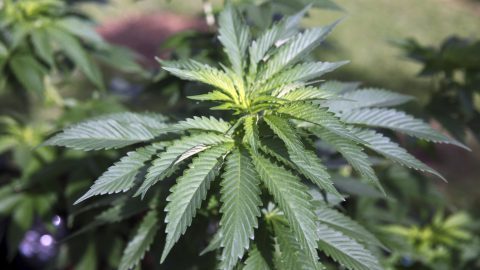
Pro-legalization group Marijuana Policy Project overhauls leadership

Doctors say 11-month-old boy’s deadly heart condition was likely related to marijuana

Listen: Radio update on cannabis policy in California
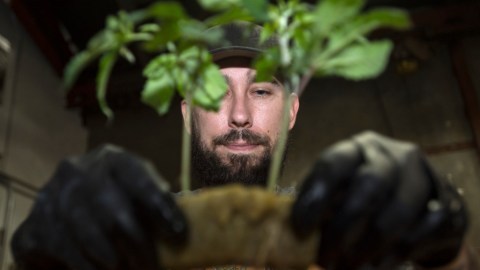
Veterans find work — and relief — with cannabis

Veterans tell of medical marijuana use in defiance of backward federal policy
aside.wpf_related.inset-links.right {float:right;clear:right;}With so much money on the line, and a program known as “equitable sharing,” whereby local and state law enforcement agencies are able to get a large cut of seized assets when partnering with federal agencies, law enforcement priorities have often been twisted toward more potentially lucrative cases.
In other instances, as documented by groups like IJ and the Drug Policy Alliance, the use of civil asset forfeiture can often resemble legalized theft, with cash, cars and other assets seized with the most arbitrary of justifications.
Such distortions of police priorities prompted a 2015 directive from Attorney General Eric Holder to curtail equitable sharing, which Sessions scrapped in July, saying the practice was needed “in order to hit organized crime in the wallet.”
While a noble cover, civil asset forfeiture has proven to be a fundamentally untenable tool in a society that values due process and property rights.
Fortunately, a bipartisan group of senators is pushing for the defunding of the DOJ’s implementation of expanded civil asset forfeiture practices. Toward that end, Sens. Mike Lee, R-Utah, Rand Paul, R-Ky., Angus King, I-Vt., Mike Crapo, R-Idaho, Jeff Merkley, D-Ore., and Tom Udall, D-N.M., recently sent a joint letter to Appropriations Committee Chairman Richard Shelby, R-Ala., and Ranking Member Jeanne Shaheen, D-N.H., asking to do just that.
Rather than facilitate the expansion of a practice that the senators note often boils down to “an obvious violation of the due process protections” of Americans, the Congress should put a halt to or at least impose severe limits on the practice.
Don’t miss our reviews of strains, vape oils and other cannabis products.
Meanwhile, the pressure is mounting on Congress to extend the critical protections for states that have chosen to legalize medical marijuana, which today is the majority of states. In total, 29 states and the District of Columbia have passed laws allowing some lawful access of marijuana for medicinal purposes.
Since marijuana remains illegal under federal law, the bipartisan Rohrabacher-Blumenauer amendment prohibiting the use of federal funds to meddle with state medical marijuana laws has been critical to shielding patients and above-board operators from federal crackdowns.
Ultimately, the tension between state and federal laws won’t be resolved until Congress permanently changes federal law to give states more flexibility to decide their own policies on marijuana.
While in the long run the best thing that could happen is for the Congress to recognize that marijuana prohibition or legalization shouldn’t be a federal responsibility, for now the important thing is for the Congress to extend the Rohrabacher-Blumenauer amendment.
To subscribe to The Cannifornian’s email newsletter, click here.
The post Editorial: Bipartisanship critical to curb civil asset forfeiture and marijuana crackdowns appeared first on The Cannifornian.
The post Editorial: Bipartisanship critical to curb civil asset forfeiture and marijuana crackdowns appeared first on Cannabis for Chronic Pain.
source https://canna-base.com/editorial-bipartisanship-critical-to-curb-civil-asset-forfeiture-and-marijuana-crackdowns/
1 note
·
View note
Text
Pro-legalization group Marijuana Policy Project overhauls leadership
The man behind more than half of the successful state-level medical and recreational marijuana legalization efforts is stepping down as leader of the marijuana law reform organization he helped found.
The national advocacy group Marijuana Policy Project announced Tuesday that co-founder and executive director Rob Kampia will transition from executive director to a new role focused on strategic development. He will continue to serve on the nonprofit organization’s board of directors, according to the announcement.
Matt Schweich, MPP’s director of state campaigns since 2015, will serve as interim director while the organization searches for a new executive director over the next six months.

The Marijuana Policy Project announced Tuesday that Rob Kampia is stepping down from his role as the organization’s executive director. (Courtesy Marijuana Policy Project)
“I’m honored to have served as executive director, I’m excited the board chose the person I nominated to serve as interim executive director, and I’m energized to help identify a new executive director to finish the job of ending marijuana prohibition in the U.S.,” Kampia said in a statement released Tuesday.
Kampia said that when he co-founded MPP in 1995, medical marijuana was still illegal in all 50 states. Under his leadership, MPP orchestrated successful campaigns for medical marijuana in more than a dozen states. In 2012, he helped lead MPP’s groundbreaking campaign for Colorado’s marijuana-legalizing Amendment 64 ballot initiative and then scaled the strategy to pass similar ballot measures legalizing adult-use marijuana in Alaska in 2014, and then Maine, Massachusetts and Nevada in 2016. The organization’s 2016 push for legalization in Arizona fell short.
Don’t miss our reviews of strains, vape oils and other cannabis products.
His tenure leading MPP was not without controversy. In January 2010, he was forced by the board of directors to take a three-month medical leave of absence in the wake of a sexual misconduct scandal that led seven staffers to resign, according to The Washington Post.
“I wasn’t nearly careful enough in considering other people’s feelings with my actions and my language,” he told The Washington Post at the time. “I’ve also learned I’m capable of change because, overnight, we changed the culture of MPP.”
In his statement Tuesday, Kampia said he was looking forward to spending more time on Capitol Hill to lobby and help craft legislation for national marijuana legalization.
“I want to thank the MPP board for dedicating sufficient resources to allow me to focus on strategy and fundraising, while liberating me from managerial duties and other responsibilities,” he said.
This article was first published at TheCannabist.co.
To subscribe to The Cannifornian’s email newsletter, click here.
The post Pro-legalization group Marijuana Policy Project overhauls leadership appeared first on The Cannifornian.
The post Pro-legalization group Marijuana Policy Project overhauls leadership appeared first on Cannabis for Chronic Pain.
source https://canna-base.com/pro-legalization-group-marijuana-policy-project-overhauls-leadership/
0 notes
Text
Doctors say 11-month-old boy’s deadly heart condition was likely related to marijuana
An 11-month-old Colorado boy’s death from a heart condition was likely related to ingestion of marijuana, two Denver doctors have concluded, but the precise link remains unclear.
The boy’s death was first reported in a study published last year about kids’ emergency room visits following marijuana legalization. The boy, who was not identified in that study, arrived at the hospital unresponsive and with a rapid heart beat, and he later went into cardiac arrest and died. He had no known history of health problems.
The boy tested positive for THC, the psychoactive compound in marijuana. But, at the time, the researcher on the original study said he was unsure whether that was related to the boy’s death.
Related Articles

Veterans find work — and relief — with cannabis

Veterans tell of medical marijuana use in defiance of backward federal policy

Survey says veterans strongly back legalizing medical marijuana
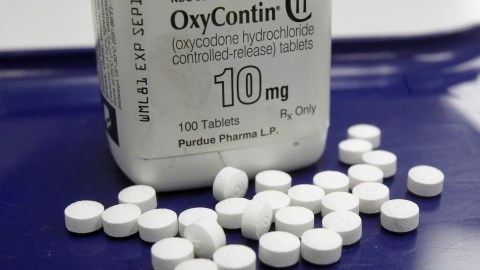
White House opioid commission rejects medical marijuana as pain relief option

Slideshow: Athletes who support cannabis
aside.wpf_related.inset-links.right {float:right;clear:right;}But, in a new case report published this year, two doctors from the Rocky Mountain Poison and Drug Center reveal more information about the boy’s death, while drawing a more direct line between his heart condition and the THC in his system.
“As of this writing, this is the first reported pediatric death associated with cannabis exposure,” the authors, Drs. Thomas Nappe and Christoper Hoyte, write in the case report. The report was published online in March in a journal connected to the Western Journal of Emergency Medicine.
Marijuana, though, was not the boy’s cause of death. Instead, the boy died from myocarditis — an inflammation of the heart muscle.
Previous studies have linked heart problems in young people to heavy cannabis use. There have been reports in Europe of adults who have died of heart conditions after using marijuana. But researchers are still unsure exactly how marijuana would cause heart problems.
In the new case report, the authors never refer to the boy’s death as an overdose, and many of the details surrounding the death are still murky.
For instance, the doctors noted that the boy had been living in a motel and that a parent had admitted to drug possession, including cannabis. But the doctors noted no report of the boy actually ingesting cannabis. They instead wrote that it was unlikely — given the level of THC in the boy’s system — that he had merely been exposed to marijuana in passing.
The doctors could not say how much marijuana the boy likely ingested. They also could not pinpoint when the ingestion occurred, giving only a probable time frame of two to six days prior to his death. Lastly, they added that inconsistent blood test results meant there was a slight chance that the myocarditis may have been developing silently prior to the marijuana ingestion.
But, after ruling out multiple other causes of myocarditis, the doctors concluded that marijuana was the most likely cause of the heart condition. That finding, they argued, should be a warning to both doctors and to parents.
“In states where cannabis is legalized,” they wrote in the case report, “it is important that physicians not only counsel parents on preventing exposure to cannabis, but to also consider cannabis toxicity in unexplained pediatric myocarditis and cardiac deaths[.]”
To subscribe to The Cannifornian’s email newsletter, click here.
The post Doctors say 11-month-old boy’s deadly heart condition was likely related to marijuana appeared first on The Cannifornian.
The post Doctors say 11-month-old boy’s deadly heart condition was likely related to marijuana appeared first on Cannabis for Chronic Pain.
source https://canna-base.com/doctors-say-11-month-old-boys-deadly-heart-condition-was-likely-related-to-marijuana/
0 notes
Text
Listen: Radio update on cannabis policy in California
How are cities in California regulating cannabis businesses? What about the right to grow marijuana at home? And how does it all compare to Oregon, which legalized recreational cannabis two years earlier?
Those are some of the topics discussed Wednesday in a radio segment on Jefferson Public Radio, an NPR affiliate serving southern Oregon and Northern California.
Cannifornian reporter Brooke Staggs joined the conversation, along with one of Oregon’s cannabis regulators.
Listen to the full segment here.
Still have questions? Leave them in the comments below, or email Staggs at [email protected].
To subscribe to The Cannifornian’s email newsletter, click here.
The post Listen: Radio update on cannabis policy in California appeared first on The Cannifornian.
The post Listen: Radio update on cannabis policy in California appeared first on Cannabis for Chronic Pain.
source https://canna-base.com/listen-radio-update-on-cannabis-policy-in-california/
1 note
·
View note
Text
Veterans find work — and relief — with cannabis
It was daytime outside. But in the Los Angeles warehouse owned by cannabis grower THC Design, the room was pitch black — a darkness that mimics night, tricking marijuana plants into producing buds.
To avoid disrupting that cycle, Steven Passmore wore a headlamp with a subdued green bulb as he made his way down the rows, trimming leaves from the valuable plants.
Passmore didn’t understand the anxiety that started to creep in.
As he used the green lamp to navigate from plant to plant, he began to feel like he was a soldier again, back in the desert of Iraq, helping his patrol dodge roadside bombs as mortars went off all around him. Soon, Passmore was in tears.
It wasn’t until he talked to his therapist that Passmore realized the flashback was triggered by that little green light. It was the same shade imbued by night-vision goggles, which he wore routinely during the three years he served in the Army’s 4th Infantry Division.
Passmore, 33, has post-traumatic stress disorder. He also battles chronic pain from an injury — a busted clavicle — he endured in an accident caused by a roadside bomb.
Marijuana hasn’t cured his ailments. Instead, Passmore says, cannabis makes his pain and post-traumatic stress manageable. He has fewer debilitating flashbacks and he doesn’t use the opioids that have paralyzed so many veterans.
Steven Passmore, U.S Army combat veteran, smells a marijuana plant two weeks from being harvested at THC Design, a cannabis cultivation company in Los Angeles on Friday, Nov. 3, 2017. (Photo by Ed Crisostomo, Los Angeles Daily News/SCNG)
Some 22 percent of veterans use marijuana to treat a mental or physical conditions, according to a new survey by the American Legion. And — thanks in part to programs such as THC Design’s new internship for veterans — a growing number of vets, like Passmore, are turning to careers in cannabis.
They’re doing so despite federal law, which still classifies marijuana as a Schedule I drug on par with heroin.
That means veterans can’t get medical cannabis through Veterans Administration physicians. They risk being cut off from other prescriptions or kicked out of subsidized housing. And in the 20 states where medical marijuana remains illegal, they chance having their veterans benefits eliminated or even being hit with criminal charges if they choose to medicate with cannabis.
“They’re fearful of their freedom and their lives every single day,” said Tanganyika Daniel, who co-founded the organization Marine Qweenz to help fellow veterans find healing.
Marijuana’s federal illegality also makes it nearly impossible for American doctors to do serious research into whether cannabis really does help veterans cope with PTSD, depression, pain and other wounds of war.
After working through eight years of red tape, Dr. Sue Sisley with the Scottsdale Research Institute in Arizona is finally conducting the first randomized, triple-blind study into whether cannabis can help reduce PTSD symptoms in veterans. The federal government approved the study, the state of Colorado issued a grant to help fund it and the Multidisciplinary Association for Psychedelic Studies in Santa Cruz is administering it.
Early results are positive, Sisley said, with patients in the trial reporting dark memories and flashbacks aren’t surfacing as often. And when they do, they say those episodes are less severe.
But since the Phoenix VA refuses to send patients her way, she’s struggling to find enough qualified veterans to make up a reliable sample size. She’s recently taken out billboards in hopes of recruiting the other 45 patients they need, and there’s a rally and march to draw attention to the issue Saturday in Phoenix.
“If the government would stop impeding this work, then we could start to understand more about what this plant can do,” she said.
Advocates and some legislators are trying to help, though they say they’re finding it an uphill battle.
The American Legion in September wrote a letter to the Department of Veterans Affairs Secretary David Shulkin urging him and his department to support Sisley’s study.
“Many veterans have approached us to tell us that access to cannabis has materially improved their health and wellbeing,” wrote Denise Rohan, national commander of the American Legion. “While their stories are very compelling, we need clinical evidence to have a fact-based discussion on the future of cannabis policy.”
Last month, all 10 Democratic members of the House’s Committee on Veterans Affairs wrote to Shulkin asking him to let the VA lead a study on using cannabis to treat PTSD. If they can’t commit to the research, the Congress members asked the VA to spell out what’s stopping them by Nov. 14.
“What I’m trying to do is accommodate our veterans,” said Rep. Lou Correa, a Democrat from Santa Ana who signed the letter. “Whether it’s psychological or physical pain, if a veteran comes to me and says, ‘Lou, this is what helps me get though the day. This is what works for me,’ I want to take care of that veteran.”
#metaslider_11182.flexslider .slides li {margin-right: 5px !important;}
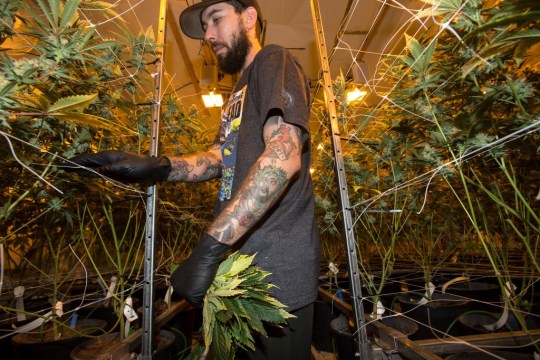
Michael Garcia, U.S Navy combat veteran, pulls dry leaves from rows of marijuana plants two weeks from being harvested at THC Design, a cannabis cultivation company in Los Angeles on Friday, Nov. 3, 2017. (Photo by Ed Crisostomo, Los Angeles Daily News/SCNG)

Michael Garcia, U.S Navy combat veteran, continues his work at THC Design, a cannabis cultivation company in Los Angeles on Friday, Nov. 3, 2017. (Photo by Ed Crisostomo, Los Angeles Daily News/SCNG)

Michael Garcia, U.S Navy combat veteran, pulls dry leaves from rows of marijuana plants two weeks from being harvested at THC Design, a cannabis cultivation company in Los Angeles on Friday, Nov. 3, 2017. (Photo by Ed Crisostomo, Los Angeles Daily News/SCNG)

Michael Garcia, U.S Navy combat veteran, dips cannabis clones in a nutrient-rich solution at THC Design, a cannabis cultivation company in Los Angeles on Friday, Nov. 3, 2017. (Photo by Ed Crisostomo, Los Angeles Daily News/SCNG)
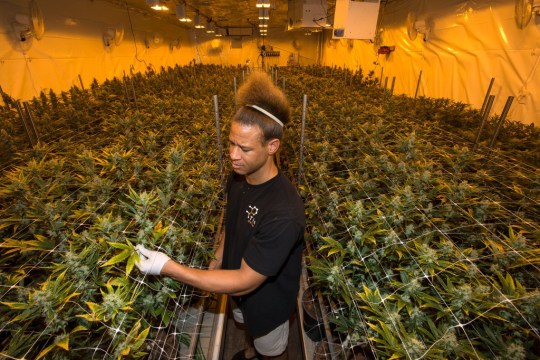
Steven Passmore, U.S Army combat veteran, pulls dry leaves from rows of marijuana plants two weeks from being harvested at THC Design, a cannabis cultivation company in Los Angeles on Friday, Nov. 3, 2017. (Photo by Ed Crisostomo, Los Angeles Daily News/SCNG)

Steven Passmore, U.S Army combat veteran, pulls dry leaves from rows of marijuana plants two weeks from being harvested at THC Design, a cannabis cultivation company in Los Angeles on Friday, Nov. 3, 2017. (Photo by Ed Crisostomo, Los Angeles Daily News/SCNG)

Michael Garcia, right, U.S Navy combat veteran, and Steven Passmore, U.S Army combat veteran, pull dry leaves from rows of marijuana plants two weeks from being harvested at THC Design, a cannabis cultivation company in Los Angeles on Friday, Nov. 3, 2017. (Photo by Ed Crisostomo, Los Angeles Daily News/SCNG)
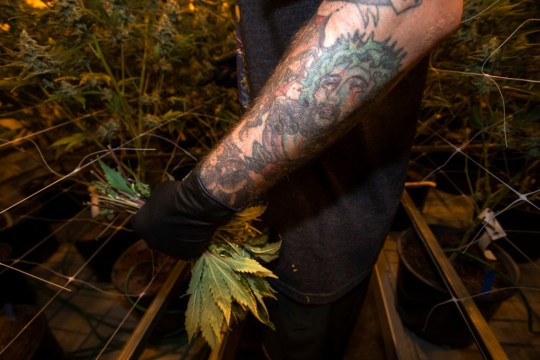
Michael Garcia, U.S Navy combat veteran, pulls dry leaves from rows of marijuana plants two weeks from being harvested at THC Design, a cannabis cultivation company in Los Angeles on Friday, Nov. 3, 2017. (Photo by Ed Crisostomo, Los Angeles Daily News/SCNG)
var metaslider_11182 = function($) { $('#metaslider_11182').addClass('flexslider'); // theme/plugin conflict avoidance $('#metaslider_11182').flexslider({ slideshowSpeed:5000, animation:'slide', controlNav:true, directionNav:true, pauseOnHover:true, direction:'horizontal', reverse:false, animationSpeed:500, prevText:"<", nextText:">", easing:"linear", slideshow:true, itemWidth:920, minItems:1, itemMargin:5 }); }; var timer_metaslider_11182 = function() { var slider = !window.jQuery ? window.setTimeout(timer_metaslider_11182, 100) : !jQuery.isReady ? window.setTimeout(timer_metaslider_11182, 1) : metaslider_11182(window.jQuery); }; timer_metaslider_11182();
Correa has backed other efforts to expand medical marijuana access for veterans. One amendment he supported would have allowed VA doctors to recommend cannabis and prohibit the use of federal funds to interfere with veterans’ rights to access the plant in states where it’s legal. The House Rules Committee blocked that amendment in July.
Shulkin, a physician, said during his State of the VA speech in May that “there may be some evidence that this is beginning to be helpful.” But he also said “until the time that federal law changes, we are not able to be able to prescribe medical marijuana for conditions that may be helpful.”
Even in states like California, where access is easier thanks to liberal marijuana laws, veterans have to pay for cannabis out of pocket since no insurance covers it. That means marijuana isn’t always an option, according to Passmore, who buys cannabis with his THC Design discount and gives it away to needy veterans.
For other veterans, their jobs may keep them from medicating with cannabis, since employers can still fire workers who test positive for the drug.
That’s one reason Michael Garcia, who also works at THC Design, decided to pursue a career in cannabis.
Michael Garcia, U.S Navy combat veteran, continues his work at THC Design, a cannabis cultivation company in Los Angeles on Friday, Nov. 3, 2017. (Photo by Ed Crisostomo, Los Angeles Daily News/SCNG)
Garcia was deployed three times during his six years as a machinist in the Navy. During his first tour, the San Jose native started to battle anxiety that one day rendered him unable to move while he was on active duty. He later was diagnosed with agoraphobia, the effects of which, he said, are greatly reduced by cannabis.
At THC Design, he’s allowed to medicate while he’s working. And he doesn’t have to pee in a cup and worry about losing his job.
“I don’t have to hide who I am,” said Garcia, 35. “I can just be myself.”
For a sense of how many veterans are turning to marijuana, look no further than the M.A.A.N. Up Cannabis Veterans Ball, slated for Friday night in Hollywood.
The event, which will feature marijuana-infused cake and a keynote speech by a retired colonel, is the brainchild of Marine Queenz founder Daniel, a former Marine who tells her own tale of discovering cannabis.
Daniel was sitting on a bunker in Iraq, feeling the weight of her flak jacket and the mortars going off nearby, when the Marine next to her lit a joint.
She’d smoked pot once previously. It was just a few years earlier, in Georgia, where she was a high school cheerleader. The weed made her choke, badly enough that she decided the D.A.R.E. evangelists were right about that drug and vowed never to try it again.
But in Iraq, on top of the bunker, every ounce of her petite frame wanted one thing — sleep.
“I turned to my friend and said, ‘Let me hit that,'” she recalled.
For the first time in months, she slept peacefully.
It would be another five years or so before Daniel would touch marijuana again.
She was back home in Georgia and struggling to figure out her next step. She wasn’t sleeping or eating well, and frequently felt anxious. A doctor at the local VA prescribed her narcotics, drugs that she likened to horse tranquilizers.
Daniel struggled to remember the last time she’d slept well and recalled the bunker in Iraq.
Soon, she was stashing weed she’d bought from a street dealer in her trunk, fearing that she might be arrested for having so much as a seed in her car.
“I was terrified,” she said. “I remember driving like I had just committed murder.”
Today, Daniel sells her own line of cannabis skincare products, Jayn Green. She’s co-producing a documentary about marijuana trimmers. And during her cannabis military ball, she’ll celebrate survival while sending the message that veterans who choose marijuana instead of narcotics shouldn’t have to hide.
“We’re just trying to tell you, let us decide. Let us choose,” she said.
“Help us, or stay out of our way.”
To subscribe to The Cannifornian’s email newsletter, click here.
The post Veterans find work — and relief — with cannabis appeared first on The Cannifornian.
The post Veterans find work — and relief — with cannabis appeared first on Cannabis for Chronic Pain.
source https://canna-base.com/veterans-find-work-and-relief-with-cannabis/
1 note
·
View note
Text
Veterans tell of medical marijuana use in defiance of backward federal policy
WASHINGTON – Joshua James Frey is clear: “Without medical marijuana I would be dead.”
This Marine Corps veteran is a two-time Purple Heart awardee. He is among the former warfighters, led by the American Legion, who are on the frontlines of the fight for a sensible, federal medical marijuana policy.
They are pushing a reluctant Uncle Sam to catch up with overwhelming public opinion that favors allowing cannabis for medical use. We covered the Legion’s Capitol Hill press conference on Thursday with Frey, other veterans and a bipartisan group from Congress. Veterans, among the most respected citizens, are a potent force in the effort to move the federal government from a backward, anti-marijuana stance that resembles the 1936 melodramatic film propaganda of “Reefer Madness” more than today’s reality of widespread medical cannabis use.
Related Articles

Survey says veterans strongly back legalizing medical marijuana

White House opioid commission rejects medical marijuana as pain relief option

Slideshow: Athletes who support cannabis
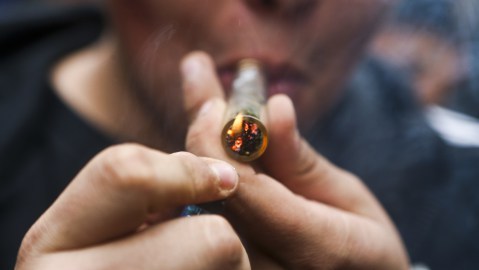
FDA cracks down on medical marijuana cancer treatment claims
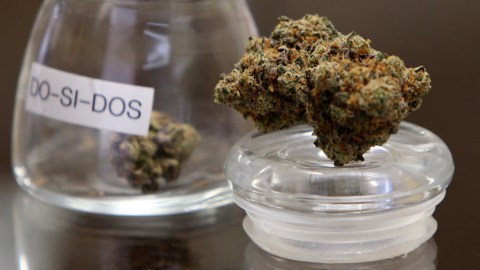
Marin County medical cannabis delivery ordinance takes shape
aside.wpf_related.inset-links.right {float:right;clear:right;}Now, we hear the stories of two veterans who use medical marijuana and one who didn’t, but whose mother believes would be alive if he did. In powerful, emotional statements at the news conference, they all complained about the dangers of the drug cocktails prescribed by doctors who are prohibited from even discussing the marijuana that has proven far more beneficial for the two vets. Their stories differ starkly from a presidential commission on drug addiction report this month that said “there is a lack of sophisticated outcome data on dose, potency, and abuse potential for marijuana.”
Let’s start with Frey, a Melbourne, Florida, combat veteran of the Third Battalion, First Marine Regiment. “Medical marijuana saved me,” he told the Federal Insider. “I feel like I did before the war (in Iraq) mentally and . . . know this could help not just the veterans struggling, but it could help anyone struggling with addiction and PTSD (post traumatic stress disorder). It’s time we all stand as one voice and truly move forward with real hard-lined research and move forward with real compassionate care.”
Frey was wounded twice in 2004, once in November by a rocket-propelled grenade. Less than a month later, shortly before Christmas, he was shot in the right shoulder, shattering it and detaching his right bicep. He spent two years at the Naval Medical Center San Diego, also known as Balboa Hospital, had six blood transfusions and 22 operations.
“I’ve been real quiet about my medical marijuana use,” he said at the news conference. “If it wasn’t for medical marijuana, I wouldn’t be here today. I wouldn’t have kids today. I wouldn’t have a beautiful wife I’ve been married to for 13 years now.”
He resents the Department of Veterans Affairs (VA) saying “you are doing something bad.” “We need to stop the madness. We need to get this stuff on the books. . . . It could help a lot of vets.”
Special report: Cannabis & fitness
Boone Cutler is an Army veteran who spent two years in Walter Reed Army Medical Center recovering from combat injuries suffered in Baghdad. Host of the Tipping Point show on KNEWS, 107.3 FM in Reno, Nevada, he has been diagnosed with early-onset Parkinson’s disease, related to his wartime blast injury. He authored the Spartan Pledge, the veterans’ commitment against suicide, and is a national spokesman for the Warfighter Rights Movement on PTSD issues.
During his two years at Walter Reed, “I was given just about every chemical cocktail you can imagine. When people look at that cocktail they want to know two things. One, why am I still alive and two, why isn’t somebody in prison, because it was that dangerous.”
At a low point, he “grabbed my gun and put it to my head,” blaming the prescription drugs for losing “my self-preservation instinct.”
He turned to marijuana to help him sleep.
“My story is not one of Cheech and Chong,” he said, sunglasses perched just above his eyes. “It wasn’t a good time when I started using cannabis. It was simply a way to survive.”
When he tried marijuana he slept for five hours. “At that time,” he said, “I hadn’t slept for five hours in five years.”
Janos “Johnny” Lutz isn’t here to tell his story, so his mother did. She told a sad tale of depression and prescription drug complicit suicide. He saw combat in Iraq and Afghanistan, where 14 of his colleagues died during Operation Khanjar in Helmand Province in 2009.
“It is our hope that the story of my son, who was lost because of prescribed pharmaceuticals will open your hearts and minds to research,” Janine Lutz said before an emotional pause, “to research cannabis, the most safe and effective treatment for our veterans today.” She started the LCpl Janos V Lutz Live to Tell Foundation in Davie, Florida, in support of military and first responders.
Her son was diagnosed with severe PTSD and brain injury. The two dozen drugs he was prescribed included Klonopin, which he took in June 2010. “Within a week, Johnny attempted suicide,” said Lutz. Her son was saved, and “Do not give Mr. Lutz Klonopin” was noted on his hospital chart. But the veteran was not told that, and he continued to believe that “he wanted to take his own life by his own free will,” his mother said, “not knowing that it was the medication that was messing with his mind.” Three months later he was given the drug again, only to be followed by another unsuccessful suicide attempt.
Don’t miss our reviews of strains, vape oils and other cannabis products.
This scenario repeated in 2012, but this time her son was successful in his suicide by overdosing on the drugs doctors prescribed.
“I think my son would be here today,” Lutz said, if medical marijuana had been available.
But it’s not for veterans at VA facilities. Almost two-thirds of the general population, however, live in the 29 states and the District of Columbia where doctors can recommend it. At the VA, medical professionals are not allowed to even discuss marijuana therapy.
Many veterans, some using medical cannabis from other sources, have asked VA doctors such as Katherine Mitchell in Phoenix about it. “I was not officially allowed to discuss the subject,” she said.
“Whether the establishment wants to recognize it or not,” Mitchell added, “because marijuana use has moved into the mainstream, health-care providers have an ethical obligation to help our patients understand the potential positive and negative impacts marijuana could have on their health.”
Instead, she and other VA medical professionals must act like medical marijuana doesn’t exist.
What sense does that make?
To subscribe to The Cannifornian’s email newsletter, click here.
The post Veterans tell of medical marijuana use in defiance of backward federal policy appeared first on The Cannifornian.
The post Veterans tell of medical marijuana use in defiance of backward federal policy appeared first on Cannabis for Chronic Pain.
source https://canna-base.com/veterans-tell-of-medical-marijuana-use-in-defiance-of-backward-federal-policy/
7 notes
·
View notes
Text
Public banks offer hope for marijuana businesses
DENVER (AP) — With most private institutions and credit unions still avoiding the legal cannabis industry, many marijuana businesses remain without bank accounts.
But one idea is gaining acceptance among marijuana entrepreneurs and a growing number of cities and states: the formation of public banks to serve the cannabis industry.
The problem? It’ll be a while before any open their doors.
Related Articles
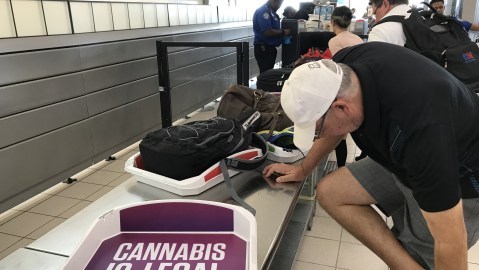
Sign of the times: Cannabis ads at the airport

Marijuana legalization moves ahead, but plenty of bumps slow effort

Simi Valley council extends ban on outdoor cultivation of marijuana plants, deliveries, more

Marin County medical cannabis delivery ordinance takes shape

Alameda officials consider ban on recreational use of cannabis in city
aside.wpf_related.inset-links.right {float:right;clear:right;}Cities that are looking into creating such financial institutions include Los Angeles, Oakland and Santa Rosa in California; Philadelphia, and Santa Fe, New Mexico. The states of Arizona and Maryland are also entertaining the idea.
“It’s important for local jurisdictions to do what they can to facilitate a successful cannabis industry,” said Dan Kalb, an Oakland City Council member who’s supporting his city’s efforts to study the feasibility of a public bank.
“It’s important for local governments to help their success, and the lack of banking services is a gap that no other industry faces. So, it’s important for local governments and elected leaders to step up and try and solve that problem.”
APPEAL OF A PUBLIC BANK
There currently is only one public bank in the United States — the state-owned Bank of North Dakota (BND).
The Bismarck-based bank was founded in 1919 to serve farmers and small businesses in North Dakota who felt they weren’t getting fair treatment from commercial banks, and it remains popular today in a solidly conservative state.
The state, not the Federal Deposit Insurance Corp., insures BND’s deposits, and the North Dakota Department of Financial Institutions, not federal bank examiners, has oversight of the bank.
North Dakota’s medical marijuana program is due to go online in 2018, and a BND spokeswoman declined to discuss whether the bank would work with the state’s new medical marijuana companies. So banking could also soon be an issue for North Dakota’s medical marijuana businesses.
For state-compliant marijuana businesses — which are still considered illegal under federal law — the ability to bank at institutions that are regulated by local governments, rather than federal agencies, would be quite welcome.
Those financial institutions wouldn’t have to worry about losing a federal license or incurring some other punishment for banking businesses that violate federal law, and therefore would be more likely to accept marijuana plant-touching clients.
Backers of public banks are supportive of the concept because they would support small, local businesses and community projects — but they have also made no secret of their desire for these banks to serve local marijuana businesses.
“We have to figure out a way to make this industry work,” said Los Angeles City Councilman Herb Wesson, who recently explained to the council why he supports a public bank in his city.
Special report: Cannabis & fitness
Both Wesson and Kalb have said they’ve been in contact with marijuana businesses that support the idea of local government-owned banks.
Efforts to explore such institutions are in various stages of progress:
—Santa Fe paid for a feasibility study that showed support for a municipally owned public bank, then established a Public Banking Task Force whose mission is to decide whether the city should apply for a state banking license.
—The Northern California cities of Oakland, Berkeley and Richmond as well as Alameda County are jointly exploring the merits of establishing a public bank to serve their communities. The municipalities have chipped in $130,000 for a feasibility study.
—Researchers at Commonomics USA, a California organization that supports public banks, are drafting a template for how the state — which is responsible for issuing commercial bank licenses — could also issue public bank licenses. The goal is to get lawmakers to turn that template into a bill that could be considered as early as next year, said Marc Armstrong, a Commonomics official working on the draft. “If such a license exists, then a lot of governance problems go away,” he added.
STUMBLING BLOCK
While public banks can operate independent of some federal agencies, they still need to obtain a so-called master account from one of the nation’s 12 federal reserve banks. Financial institutions need master accounts to open accounts, process checks and interact with the rest of the nation’s financial system.
That issue has prevented Colorado’s canna-centric Fourth Corner Credit Union from opening. Although Fourth Corner possesses a Colorado state banking charter, the Federal Reserve Bank of Kansas City has turned down the institution’s application for a master account.
Don’t miss our reviews of strains, vape oils and other cannabis products.
Proponents acknowledge that federal reserve banks can withhold master accounts from financial institutions that serve marijuana businesses. But that’s far less likely to happen if the public bank intends to serve many industries, not just marijuana.
“The reason Fourth Corner didn’t get (a master account) is because they were too concentrated in one industry, and the risk associated with that went way up,” Armstrong said.
LATE TO THE PARTY?
Marijuana businesses should temper their hopes about public banking because it could take at least two or three years before such an institution jumps through the necessary bureaucratic hoops and accumulates enough capital to open.
And by then, industry observers said, it may be too late. A growing number of commercial banks are becoming open to accepting marijuana businesses as clients, so in a few years, public banks will face much more competition for cannabis cash than exists now.
“Public banks are a good idea, but by the time anyone gets around to opening one, you’re going to have – as far as California goes – more financial institutions for marijuana businesses to choose from,” said Lance Ott, CEO of Guardian Date Systems, a canna-centric financial services company in the Golden State.
“(Public banking) process could take years. By the time they launch it, they’re going to be too far behind to make a large impact unless they offer some very attractive incentives to potential customers to come on board.”
To subscribe to The Cannifornian’s email newsletter, click here.
The post Public banks offer hope for marijuana businesses appeared first on The Cannifornian.
The post Public banks offer hope for marijuana businesses appeared first on Cannabis for Chronic Pain.
source https://canna-base.com/public-banks-offer-hope-for-marijuana-businesses/
2 notes
·
View notes
Text
Marijuana legalization moves ahead, but plenty of bumps slow effort
Since Colorado legalized recreational marijuana in 2012, seven other states and the District of Columbia have followed suit. Next year, California, Maine, and Massachusetts will begin sales, potentially tripling the size of the legal pot market.
By the end of 2018, 20 percent of Americans will live in a state where adults can legally buy and sell cannabis. Yet big problems remain unresolved, including a persistent black market that legalization was supposed to help undermine.
There are also fights between states in favor of legalizing weed and localities that oppose it. And of course marijuana remains illegal under federal law, casting a shadow over the industry.
Related Articles
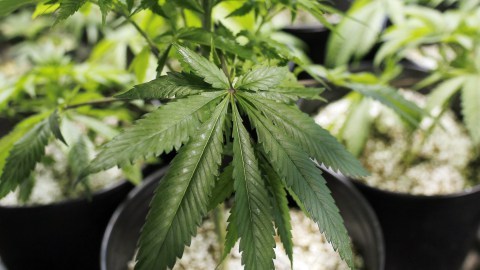
Simi Valley council extends ban on outdoor cultivation of marijuana plants, deliveries, more
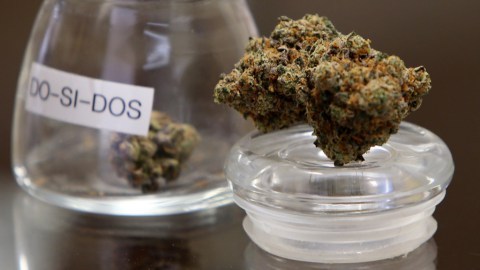
Marin County medical cannabis delivery ordinance takes shape

Alameda officials consider ban on recreational use of cannabis in city

Big investment infusion planned for cannabis dispensary chain with outlets in Southern California

Confusion coming with California’s legal marijuana
aside.wpf_related.inset-links.right {float:right;clear:right;}State tax revenue from marijuana sales exceeds $1 billion. California alone anticipates another $1 billion in annual tax revenue from legalization. But with an impending January 2018 deadline to begin issuing permits, there are signs that growers and retailers may not join the state-regulated system.
Hezekiah Allen, executive director of the California Growers Association, estimates that just 3,500 of 40,000 farmers have signed up for permits but says that’s primarily because local governments haven’t issued them or have banned marijuana businesses outright.
This creates problems for state regulators.
“We have to work with over 500 different cities and counties over the state,” says Lori Ajax, chief of California’s Bureau of Cannabis Control. “For us to issue a license, we have to make sure it’s not in violation of a city or county ordinance, and because of our size, that’s a challenge.”
California grows 13.5 million pounds of marijuana annually; less than 20 percent of it is consumed there. Growers may have to downsize as new rules ban out-of-state exports. If California’s markets open in January and many existing growers are left out, tax revenue could fall short, and a robust black market will persist.
To become legal, marijuana businesses have to secure building permits and water rights and establish record-keeping protocols unfamiliar to an industry that’s long operated in the shadows.
Don’t miss our reviews of strains, vape oils and other cannabis products.
“It’s going to take decades for California to regulate its cannabis industry,” says Allen. “It’s been decades that we’ve been making this mess, and it’s going to take us a while to clean it up.”
In Maine, where a legalization ballot measure passed in 2016 by less than 1 percentage point, localities retain broad power to ban marijuana cultivators and retailers, potentially hindering the growth of the state’s cannabis industry.
Massachusetts has a July 2018 deadline to issue its permits. That’s already been delayed once. In July state lawmakers established the independent Cannabis Control Commission to develop regulations. Even with the extension, the commission’s chairman, Steven Hoffman, says the July deadline is “a pretty tight time frame.”
Early difficulties are common for recreational marijuana. Nevada faced product shortages when its markets opened in July 2017. Alaska’s first year brought in $1.2 million in tax revenue, short of a projected $2 million.
Colorado and Washington both took in less tax revenue than expected in their first year, but revenue has grown every year since and now exceeds projections. Colorado’s effective tax rate is around 30 percent, and Washington has a flat rate of 37 percent.
Joseph Bishop-Henchman of the Tax Foundation says these relatively high taxes have allowed a significant black market to persist by making legal pot expensive. States that have legalized more recently have set the rate lower. In Oregon, it’s 17 percent. Maine and Massachusetts have proposed rates of about 20 percent, while California is planning for a 15 percent levy.
There isn’t enough data to measure the impact of lower taxes, but Maine state Senator Teresa Pierce believes that Maine will “hit a sweet spot” and be able to undercut black market prices.
Special report: Cannabis & fitness
As momentum behind legalization grows, a federal crackdown appears less likely. To avoid prosecution under federal law, state legislatures adhere to the 2013 Cole Memorandum, a document issued during Eric Holder’s tenure as U.S. attorney general essentially assuring states that the feds won’t intervene as long as they follow their own rules. But the Cole Memo isn’t legally binding, and Attorney General Jeff Sessions has a long history of opposition to marijuana.
“I think the Justice Department may rearrange the deck chairs a little bit, but ultimately, they’re not going to change direction too much,” says John Hudak, a senior fellow at the Brookings Institution. “It seems like a not-so-popular approach to an issue that most Americans don’t see as a problem.”
Marijuana’s ambiguous legal standing limits the ability of businesses to operate normally. Major banks are still unwilling to service growers and dispensaries. Marijuana companies are also ineligible for common tax deductions.
This August, New Jersey Senator Cory Booker introduced a bill that would remove marijuana from the Controlled Substances Act, legalize it federally, and withhold prison funding from states with racial and class disparities in their marijuana arrest rates. With Republicans in charge of Congress, the bill is largely symbolic. That leaves states that have legalized pot trying not to attract undue attention from a potentially adversarial Trump administration.
“I think as long as we keep our noses clean, we’ll be good,” says Republican Washington state Senator Ann Rivers.
To subscribe to The Cannifornian’s email newsletter, click here.
The post Marijuana legalization moves ahead, but plenty of bumps slow effort appeared first on The Cannifornian.
The post Marijuana legalization moves ahead, but plenty of bumps slow effort appeared first on Cannabis for Chronic Pain.
source https://canna-base.com/marijuana-legalization-moves-ahead-but-plenty-of-bumps-slow-effort/
1 note
·
View note
Text
Survey says veterans strongly back legalizing medical marijuana
WASHINGTON – Veterans tend to be an older, more conservative group, but that doesn’t stop them from advocating for a radical change in direction from the nation’s outdated policies on marijuana.
The American Legion represents many conservative veterans, but that doesn’t stop it from taking progressive positions on certain key issues.
A survey released by the American Legion, the nation’s largest wartime veterans’ service organization, indicates near-unanimous support among veterans for research on medical marijuana, with an overwhelming majority supporting legalization of the drug for medical purposes.
Related Articles

White House opioid commission rejects medical marijuana as pain relief option

Slideshow: Athletes who support cannabis

FDA cracks down on medical marijuana cancer treatment claims
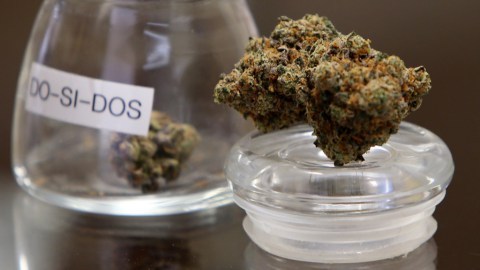
Marin County medical cannabis delivery ordinance takes shape

Golf and weed: Players who want to score low first get high
aside.wpf_related.inset-links.right {float:right;clear:right;}The Legion adopted a resolution last year calling on the Drug Enforcement Administration to reclassify marijuana from its current illicit status to a category “that, at a minimum, will recognize cannabis as a drug with potential medical value.” The resolution also called on the DEA “to license privately funded medical marijuana production operations.”
The Legion made it clear, however, that its support of marijuana ends where fun begins.
“It is very important to note that The American Legion is NOT advocating for recreational use of marijuana,” its statement said.
This is one of several progressive moves for an organization that represents voters who largely voted for President Donald Trump, according to exit polls.
Last month, the Legion urged Trump to veto Republican legislation overturning a Consumer Financial Protection Bureau rule prohibiting financial firms from imposing arbitration on consumers and barring class-action lawsuits.
When Trump moved to ban transgender people from the military, the Legion rebuffed him, saying: “Any requirement that disqualifies an able-bodied person from serving in our armed forces should be based solely upon its proven adverse effect on readiness, and nothing else. . . . Should that standard become questionable, The American Legion relies on the judgment of the senior leadership of the military” and not, notably, the president.
After the August white supremacist violence in Charlottesville, the Legion said it considers that those who display the Confederate flag are “by very definition anti-American,” because the Confederates waged war against the United States.

A new survey shows near-unanimous support for the right to use medical marijuana among members of the American Legion. (Doug Duran/Cannifornian file)
By the way, the Legion allowed women members from its beginning in 1919, not a common practice then, according to Joseph M. Plenzler, the organization’s spokesman. They could vote for the organization’s national commander before they could vote for the president of the nation.
Regarding medical marijuana, the key finding from the survey of 802 people, 513 veterans and 289 of their caregivers is that 9 in 10 favor medical research on it and four-fifths support legalizing medical marijuana.
“Support for medical cannabis, and research on medical cannabis is high across veterans and caregivers, all age ranges, gender, political leanings and geography,” said a memorandum from Five Corners Strategies, which conducted the survey for the Legion.
But two important points: The survey was commissioned by an organization that supports the research, and the survey has limitations. The most important limitations are that the sample was limited to a list of landline phones, a method which excludes veterans in wireless-only households as well those in which a veteran household was incorrectly identified on the list. Also, the survey recruited respondents using automated recorded voice. That has the benefit of eliminating human bias in those asking survey questions. But it achieves lower cooperation rates than live interviewers.
There is broad support for medical cannabis across various categories, according to the survey:
Geography: “The support for research and legalization is spread across the country, in states where medical cannabis is currently legal and in states where it is not.”
Special report: Cannabis & fitness
Political orientation: Among veterans and caregivers federally legalized medical marijuana is supported by about 9 in 10 self-identified liberals, almost as many conservatives and 7 in 10 independents.
Age: While support for medical cannabis research and legalization drops the older veterans and their caregivers become, it remains strong even among senior citizens. Among those 60 and older, more than three-quarters favored medical marijuana. All in the 18 to 30 age group agreed.
It’s worth noting that 60 percent of those surveyed were 60 or older. That’s one reason for the finding that “the majority of veterans surveyed that are using cannabis are over the age of 60,” according to the memo.
“It is also clear from the survey that veterans are accessing cannabis to assist them in states with and without medical marijuana programs,” Five Corners added.
Veterans and their caregivers are not alone in favoring a more sensible approach to medical marijuana. A Yahoo News/Marist poll found 84 percent supported it in March, including majorities of Americans of all ages. The lowest level was 65 percent among those ages 69 and older.
The Legion is making progress in its quest to change Uncle Sam’s old ways. Last week, all 10 Democrats on the House Committee on Veterans’ Affairs urged VA to research the impact of medical marijuana on chronic pain and post-traumatic stress disorder among veterans.
So far, however, the Department of Veterans Affairs has not changed its policy. VA Secretary David Shulkin, however, has indicated a willingness to examine medical marijuana when federal law allows.
“There may be some evidence that this (medical marijuana) is beginning to be helpful,” Shulkin said when asked about it in May, the last time he commented on it. “And we’re interested in looking at that and learning from that. But until the time that federal law changes, we are not able to be able to prescribe medical marijuana for conditions that may be helpful.”
To subscribe to The Cannifornian’s email newsletter, click here.
The post Survey says veterans strongly back legalizing medical marijuana appeared first on The Cannifornian.
The post Survey says veterans strongly back legalizing medical marijuana appeared first on Cannabis for Chronic Pain.
source https://canna-base.com/survey-says-veterans-strongly-back-legalizing-medical-marijuana/
0 notes
Text
White House opioid commission rejects medical marijuana as pain relief option
WASHINGTON — President Donald Trump’s commission on the opioid crisis called Wednesday for a nationwide system of drug courts and easier access to alternatives to opioids for people in pain, part of a wide-ranging menu of upgrades it said are needed to curb the opioid epidemic.
The commission, headed by New Jersey Gov. Chris Christie (R), called for expanding drug courts – an alternative system that tries to channel substance abusers accused of crimes into treatment – into all 93 federal court jurisdictions.
The 56 recommendations in the report include requiring doctors to show that they have received training in the safe provision of opioids before they can renew with the Drug Enforcement Administration their licenses to handle controlled substances. The panel also wants to —mandate that medical providers check prescription drug monitoring databases to ensure that patients aren’t “doctor-shopping” for such medications. In some states, use of that technology is voluntary.
Related Articles

Survey says veterans strongly back legalizing medical marijuana

Slideshow: Athletes who support cannabis
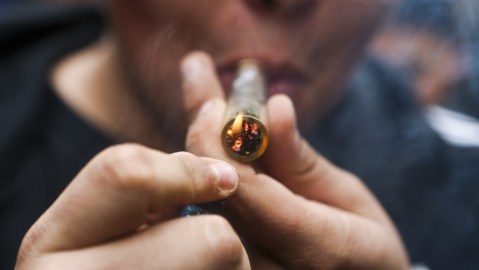
FDA cracks down on medical marijuana cancer treatment claims
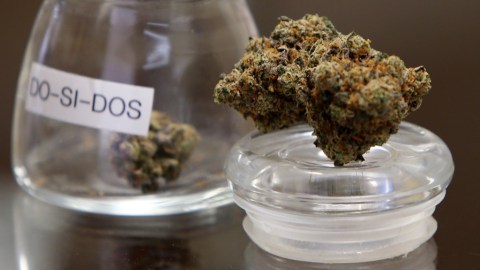
Marin County medical cannabis delivery ordinance takes shape
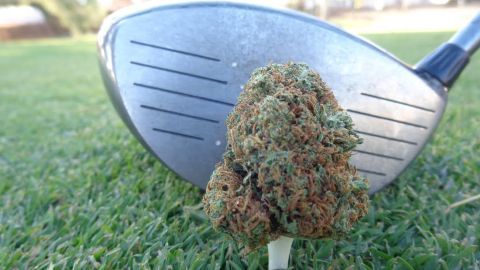
Golf and weed: Players who want to score low first get high
aside.wpf_related.inset-links.right {float:right;clear:right;}The American Medical Association has expressed concern that federally mandated “one-size-fits-all” training would conflict with state requirements for education and do little to speed the end of the crisis.
The commission specifically declined to endorse the use of marijuana for pain, despite some studies suggesting that access to marijuana may decrease opioid deaths. Christie said in his cover letter to the president that there is “a lack of sophisticated outcome data on dose, potency and abuse potential for marijuana.”
Nor did the commission endorse establishing safe injection sites where intravenous drug users can inject drugs under the supervision of trained personnel who prevent them from overdosing.
At the commission’s final meeting, at which members approved the report, Christie spoke passionately about ending the stigma surrounding drug addiction. He used the example of his mother, who was addicted to cigarettes for 55 years before she was diagnosed with lung cancer at 71. When that happened, he said, “no one told me she was getting what she deserved. No one told me they weren’t praying for her.”
Like Trump, who declared the opioid crisis a “public health emergency” six days ago, the President’s Commission on Combating Drug Addiction and the Opioid Crisis identified no new funding for the drug crisis, which claims the lives of an estimated 175 people every day. But it called for block grants of substance-abuse aid that would consolidate federal funding from a variety of sources and send it to cities and states that are fighting the battle on their streets.
Trump’s emergency declaration, which the commission had urged along with eight other recommendations in its July interim report, allows the president to direct all federal agencies to speed aid to localities in the grip of what he called “the worst drug crisis in American history.”
Special report: Cannabis & fitness
One important step he signaled was a decision to have the Department of Health and Human Services waive a 1970s-era policy that blocked Medicaid payments to inpatient —facilities with more than 16 beds for treating substance abuse. That should make treatment more widely available. Trump also said the U.S. Postal Service and the Department of Homeland Security are strengthening package inspections in an attempt to reduce the flow of the street drug fentanyl, much of which is synthesized in China, sent to the United States and mixed with powdered heroin by dealers. On Wednesday, the commission recommended stronger penalties for fentanyl trafficking.
Trump suggested that the federal government might file suit against companies he called “bad actors,” presumably those in the pharmaceutical industry that have allowed painkillers to reach the black market. Private attorneys have already filed some lawsuits, and a coalition of 41 state attorneys general is investigating the role of some companies in the epidemic.
But the president was harshly criticized by activists and Democratic lawmakers for failing to put significant new funding into a battle that many say will require tens of billions of dollars, especially for treatment of the 21 million people with substance abuse disorders. Only about 10 percent of them receive treatment of any kind.
Don’t miss our reviews of strains, vape oils and other cannabis products.
Overdoses from prescription drugs have killed 200,000 people since 2000, and more than 500,000 have succumbed to overdoses of all kinds during the same period. Drug deaths are expected to exceed 60,000, a record, when final numbers are available for 2016. As the crisis has evolved, heroin and fentanyl are responsible for an ever larger share of the deaths.
Christie’s commission called for expanding medication-assisted treatment, which many experts have called the most effective approach and which Food and Drug Administration Commissioner Scott Gottlieb has endorsed. That therapy provides users with buprenorphine, methadone and naltrexone in an attempt to wean them off addiction to heroin or prescription narcotics.
The commission also said the government must adjust the way insurance rates are set, saying they currently encourage doctors to use opioid painkillers rather than physical therapy or other treatments that do not involve drugs.
Similarly, it recommended that the Centers for Medicare and Medicaid Services eliminate questions about pain from satisfaction surveys that are used rate hospital performance. Physicians have said they feel pressure to treat pain aggressively, often with drugs, so they are not penalized on such surveys. The start of the opioid epidemic in the early 2000s is widely blamed on overprescribing of opioid medications.
To subscribe to The Cannifornian’s email newsletter, click here.
The post White House opioid commission rejects medical marijuana as pain relief option appeared first on The Cannifornian.
The post White House opioid commission rejects medical marijuana as pain relief option appeared first on Cannabis for Chronic Pain.
source https://canna-base.com/white-house-opioid-commission-rejects-medical-marijuana-as-pain-relief-option/
2 notes
·
View notes
Text
FDA cracks down on medical marijuana cancer treatment claims
(Bloomberg) — U.S. officials sent a warning to the marijuana industry, alerting online sellers they cannot market their products as a treatment for cancer.
The Food and Drug Administration sent letters to four companies on Tuesday, warning them about unsubstantiated claims that their marijuana-derived products can combat tumors and kill cancer cells. The firms sell products including oils and capsules made from cannabidiol, also known as CBD, a component of the marijuana plant that doesn’t cause the mind-altering effects of the other main component, tetrahydrocannabinol, or THC.
The agency told the companies they cannot make claims to treat or cure a disease when a product has never been studied as a treatment. Curbing the sale of CBD products with health claims could put a damper on the medical-marijuana market. Producers that are required to nix references to medical ailments may move toward the recreational side of the legal cannabis industry.
Related Articles

Marin County medical cannabis delivery ordinance takes shape

Golf and weed: Players who want to score low first get high

Cannabis & yoga: Combining the two can provide balance, healing and strength

Study: Cannabis users have more sex

Can cannabis help you get in shape?
aside.wpf_related.inset-links.right {float:right;clear:right;}Eight states and Washington, D.C., have legalized pot for recreational use. Twenty-one additional states have legalized for medical purposes.
‘We don’t let companies market products that deliberately prey on sick people with baseless claims that their substance can shrink or cure cancer and we’re not going to look the other way on enforcing these principles when it comes to marijuana-containing products,’ FDA Commissioner Scott Gottlieb said in a statement.
The crackdown could also have a wider impact on the pharmaceutical industry. CBD is being researched in labs as potential treatment for certain diseases. Biotech company GW Pharmaceuticals Plc, for instance, is testing the component to treat certain forms of epilepsy.
Gottlieb hinted almost a month ago at a congressional hearing that the FDA may get tough on unproven marijuana claims. The companies that received warning letters are: Greenroads Health, Natural Alchemist, That’s Natural! and Stanley Brothers Social Enterprises. The companies have 15 working days to tell the FDA what corrective steps they will take.
Stanley Brothers runs the company CW Hemp, which said in an emailed statement it takes ‘regulatory compliance very seriously’ and will work with the FDA to better monitor the information on its website. The other companies didn’t return requests for comment.
To subscribe to The Cannifornian’s email newsletter, click here.
The post FDA cracks down on medical marijuana cancer treatment claims appeared first on The Cannifornian.
The post FDA cracks down on medical marijuana cancer treatment claims appeared first on Cannabis for Chronic Pain.
source https://canna-base.com/fda-cracks-down-on-medical-marijuana-cancer-treatment-claims/
0 notes
Text
Warning of marijuana Halloween candy derided as scare tactic
TRENTON, N.J. (AP) — State officials are warning parents to look out for people slipping their kids marijuana-laced candy while trick-or-treating. But with no apparent evidence that’s ever happened, advocates for legalizing the drug say it’s nothing more than a Halloween scare tactic.
The state attorney general’s office published a document being shared by law enforcement agencies around New Jersey and beyond, including a warning about a “significant presence of marijuana candy and other edible forms in New Jersey and nearby states.”
“The presence of these edible forms of marijuana poses a great risk to users, especially to children, who may accidentally receive marijuana candy during Halloween,” the warning said.
Related Articles
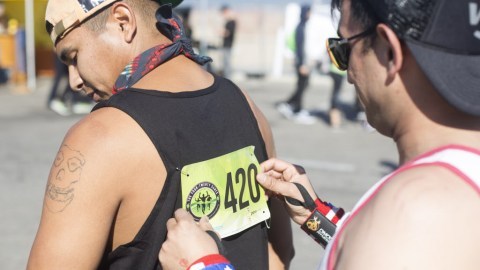
Can cannabis help you get in shape?

Talk show host Hugh Hewitt lobbies Jeff Sessions to pursue federal marijuana crackdown

Latest Gallup poll: Americans favor marijuana legalization more than ever before
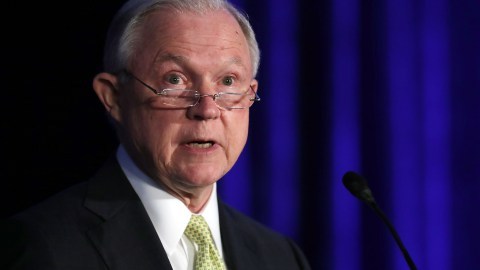
Jeff Sessions calls for “more competition” among medical marijuana growers for research

Race for CBD medication breakthrough: Is pharma firm’s boon the hemp industry’s doom?
aside.wpf_related.inset-links.right {float:right;clear:right;}The warning cites the case of a 10-year-old New York boy who police said became ill after eating candy infused with cannabis found in the back seat of his family’s car, but that had nothing to do with Halloween.
Advocates say marijuana candy has seemingly become the new “razor blades in the apples” Halloween urban myth, with police around the country sharing the message despite the lack of any known cases.
“Cannabis consumers are not looking to dose children with cannabis. That is not something that I’ve ever heard of anybody ever being interested in doing or wanting to do or would think is ethical,” said Evan Nison, executive director of the New Jersey chapter of NORML, which is pushing to legalize marijuana. “This is just something that some police officers sometimes say every year, never really comes to fruition, and is just a scare tactic.”
Sharon Lauchaire, a spokeswoman for the state attorney general, said there have been “several instances” in the state and elsewhere of children becoming ill after eating edible marijuana. She declined to respond to follow-up questions to cite specific cases and evidence of anyone doing this on Halloween.
“Our job is to try to prevent accidents whenever possible, and given the striking similarities between these edible drugs and legitimate candy products, a warning was necessary and appropriate. We want our children to have a safe and happy Halloween,” she said.
Special report: Cannabis & fitness
Cannabis-infused candy can take the form of gummy bears or can be made to look like fruit-flavored hard candy or chocolate bars.
Al Della Fave, spokesman for the Ocean County prosecutor’s office, which shared the message this week, concedes that the likelihood of someone giving a trick-or-treater marijuana candy is “very slim.”
“But you never know,” he said. “All we’re saying is check your kids’ candy. If something’s not in a manufacturer’s wrapper … throw it out. We’re not trying to scare people.”
Nison said the idea of police being concerned about cannabis candy being wrapped to look like regular candy is another good reason to legalize and regulate it. Colorado, for instance, prohibits the packaging of edibles from having the word “candy” on it, and it bars edibles from taking the shape of humans, animals or cartoons.
The Democratic front-runner in New Jersey’s Nov. 7 governor’s race supports full marijuana legalization in the state, which could happen as soon as next year if he’s elected and the Democratic-controlled Legislature passes it. His Republican challenger opposes marijuana legalization. New Jersey already has a medical marijuana program.
To subscribe to The Cannifornian’s email newsletter, click here.
The post Warning of marijuana Halloween candy derided as scare tactic appeared first on The Cannifornian.
The post Warning of marijuana Halloween candy derided as scare tactic appeared first on Cannabis for Chronic Pain.
source https://canna-base.com/warning-of-marijuana-halloween-candy-derided-as-scare-tactic/
0 notes
Text
Talk show host Hugh Hewitt lobbies Jeff Sessions to pursue federal marijuana crackdown
Radio personality Hugh Hewitt lobbied U.S. Attorney General Jeff Sessions for a federal crackdown on legal marijuana businesses during a Thursday morning interview.
During the 14-minute interview, Hewitt asked Sessions pointed questions about marijuana enforcement, and probed him about specific methods to prosecute businesses in states that have legalized the sale of recreational marijuana.
“Let me turn to marijuana,” said Hewitt, several minutes into their conversation. “A lot of states are just simply breaking the law. And a lot of money is being made and banked. One RICO prosecution of one producer and the banks that service them would shut this all down. Is such a prosecution going to happen?”
Related Articles
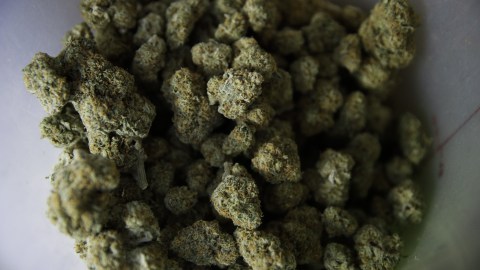
Latest Gallup poll: Americans favor marijuana legalization more than ever before

Jeff Sessions calls for “more competition” among medical marijuana growers for research

Race for CBD medication breakthrough: Is pharma firm’s boon the hemp industry’s doom?

Drug czar nominee withdraws from consideration after opioid revalations
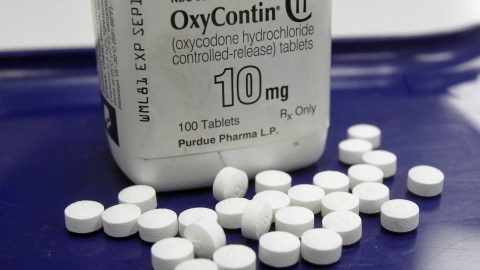
Study: Opiate overdose deaths fall after marijuana legalization in Colorado
aside.wpf_related.inset-links.right {float:right;clear:right;}Sessions replied, “I don’t know that one prosecution would be quite as effective as that… I do not believe there’s any argument that because a state legalized marijuana, that the federal law against marijuana is no longer in existence. I do believe that the federal laws clearly are in effect in all 50 states. And we will do our best to enforce the laws as we’re required to do so.”
RICO, the Racketeer Influenced and Corrupt Organizations Act, allows for private individuals to sue “racketeers” who allegedly damage a business or property.
A June ruling by the 10th U.S. Circuit Court of Appeals in Denver remanded a RICO case to district court, leaving the door open for private-property owners to potentially bring federal racketeering claims against neighboring marijuana grows and dispensaries, legal analysts have told The Cannabist.
The plaintiff in the case was Safe Streets Alliance, a Washington, D.C.-based anti-drug and anti-crime organization that took up the cause of Michael P. Reilly and Phillis Windy Hope Reilly, the owners of a ranch near Pueblo, Colo. The couple claimed the smell of federally illegal marijuana wafting on to their property from a nearby cultivation facility damaged property values.
“This is basically a road map for people who own property that is near (a marijuana facility) … for how to bring a federal suit to get relief,” Safe Streets Alliance attorney Brian W. Barnes told The Cannabist in June.
This is not the first time that Hewitt has pushed Sessions on the question of applying the RICO Act. In March, in an interview on the show, he asked Sessions whether he would apply RICO to “end this facade and the flaunting of the Supremacy Clause.”
Sessions’ March answer was similar to his position today: “We will enforce law in an appropriate way nationwide… I think it’s a little more complicated than one RICO case.”
On Thursday, Hewitt suggested the Justice Department could invoke the Supremacy Clause, saying, “One prosecution that invokes Supremacy Clause against one large dope manufacturing concern, and follows the money as it normally would in any drug operation and seizes it, would shut, would chill all of this. But I haven’t seen one in nine months, yet. Is one coming?”
The idea of federal preemption of state law is based on the U.S. Constitution’s Supremacy Clause (Article VI, Clause 2), which states that the Constitution “shall be the supreme law of the land.”
In Colorado’s June RICO case, the court didn’t rule on whether the Supremacy Clause would indeed preempt Colorado’s marijuana laws and other state-enacted legal cannabis statues, but rather that private citizens in this case didn’t have the appropriate standing to raise those claims, a legal analyst told The Cananbist.
Sessions responded to Hewitt’s question about the Supremacy Clause, saying: “I can’t comment on the existence of an investigation at this time, Hugh, you know that.”
In recent months, Sessions has sent letters to the first four states to legalize the sale of recreational marijuana. In each letter, Sessions referred to regional and state data depicting serious public health and safety issues arising from marijuana legalization. He also raised questions about the efficacy of their respective marijuana regulatory systems in preventing black market grows and inter-state trafficking. He asked the governors of each state to inform him of their efforts to curtail these issues.
Sessions closed out the topic of marijuana with Hewitt by saying, “I hear you. You’re making a suggestion. I hear it.”
Hewitt admitted, “I’m lobbying.”
Sessions laughingly agreed, “You’re lobbying.”
This article was first published at TheCannabist.co.
The post Talk show host Hugh Hewitt lobbies Jeff Sessions to pursue federal marijuana crackdown appeared first on The Cannifornian.
The post Talk show host Hugh Hewitt lobbies Jeff Sessions to pursue federal marijuana crackdown appeared first on Cannabis for Chronic Pain.
source https://canna-base.com/talk-show-host-hugh-hewitt-lobbies-jeff-sessions-to-pursue-federal-marijuana-crackdown/
0 notes
Text
Latest Gallup poll: Americans favor marijuana legalization more than ever before
Americans’ support for marijuana legalization has reached a new high, the latest Gallup poll shows.
Gallup poll results released Wednesday found that 64 percent of adult survey respondents said they thought the use of marijuana should be made legal. It’s the highest total in Gallup’s nearly 50 years of posing the question.
It’s also the first time that a majority of Republican respondents favored legalization.
The survey of 1,028 Americans over the age of 18 also found that 51 percent of respondents with Republican political affiliation said they supported legal marijuana. That’s up from 42 percent in 2016. Although more Democrats favored legalization — up to 72 percent from 67 percent — support fell among Independents to 67 percent from 70 percent.
“The trajectory of American’s views on marijuana is similar to that of their view on same-sex marriage over the past couple of decades,” Gallup officials wrote in the release of the marijuana poll results. “On both issues, about a quarter supported legalization in the late 1990s, and today 64 percent favor each. Over the past several years, Gallup has found that Americans have become more liberal on a variety of social issues.”
When Gallup first posed the marijuana legalization question in October 1969, only 12 percent of respondents were in favor. A whopping 84 percent sat opposed.
The levels of support slowly climbed in the decades that followed, settling in at 25 percent in the 1980s and 1990s and in the mid-30 percent range during the early 2000s.
Fourteen years ago, public opinion was an inverse image of where it’s at today: 64 percent of adults surveyed opposed marijuana legalization, 34 percent said it should be legal and 2 percent had no opinion.
Don’t miss our reviews of strains, vape oils and other cannabis products.
Public opinion has been in step with successful marijuana legalization efforts across the United States, Gallup officials said.
In late November 2012, following the states of Colorado and Washington voting to legalize the recreational use of marijuana, the Gallup marijuana poll showed support of legalization at 48 percent. That climbed to 58 percent by October 2013.
Last year — in advance of nine states voting on legalization measures, eight of which passed — Americans favored legalization at a level of 60 percent. A Quinnipiac poll released in August showed that 61 percent of those polled agreed that “the use of marijuana should be made legal in the United States.”
The Gallup poll released Wednesday was conducted Oct. 5 through 11. The margin of sampling error was plus or minus 4 percentage points.
This article was first published at TheCannabist.co.
To subscribe to The Cannifornian’s email newsletter, click here.
The post Latest Gallup poll: Americans favor marijuana legalization more than ever before appeared first on The Cannifornian.
The post Latest Gallup poll: Americans favor marijuana legalization more than ever before appeared first on Cannabis for Chronic Pain.
source https://canna-base.com/latest-gallup-poll-americans-favor-marijuana-legalization-more-than-ever-before/
0 notes